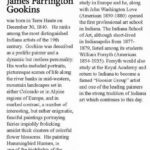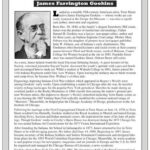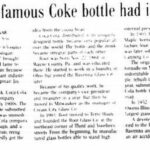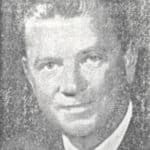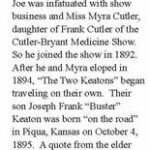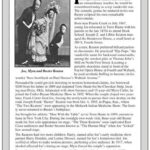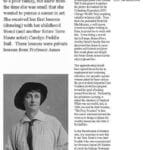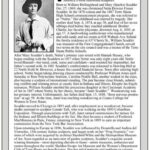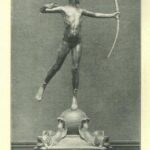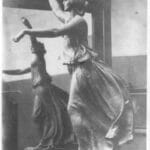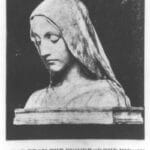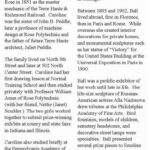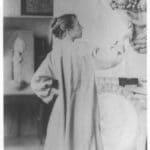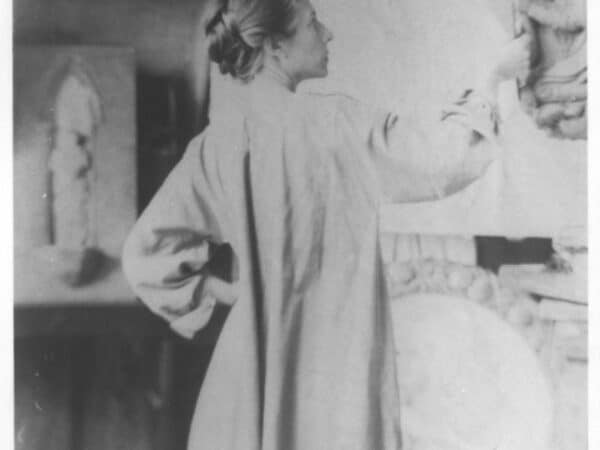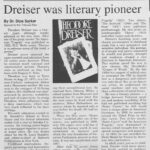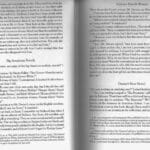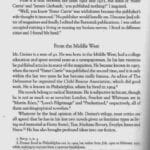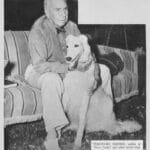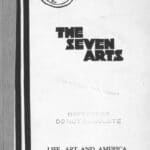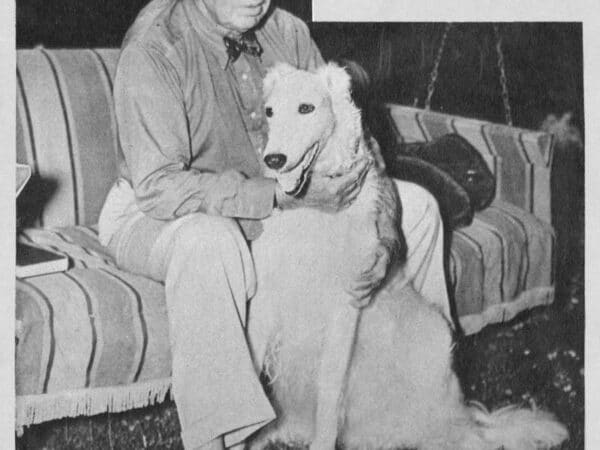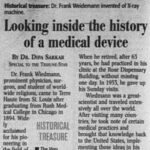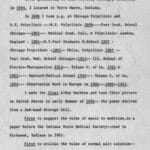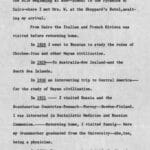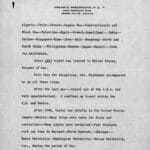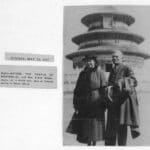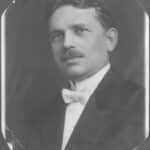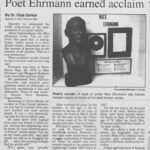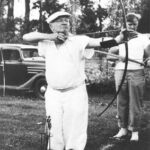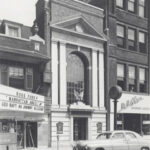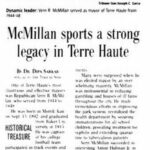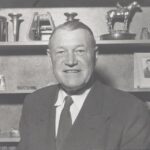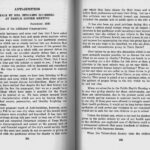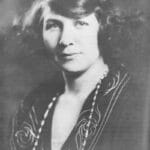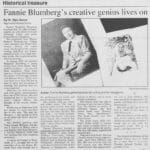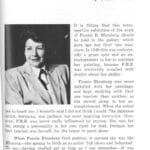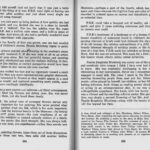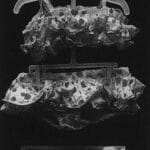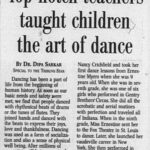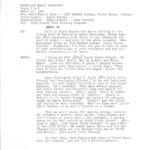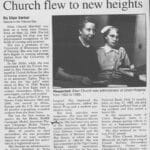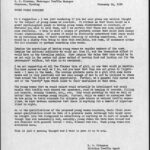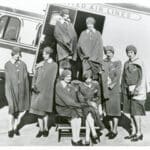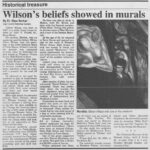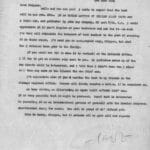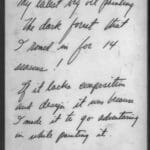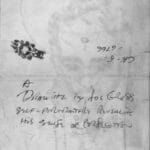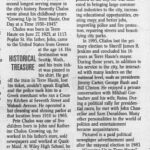Historical Biographies Timeline
- December 13, 1747
- December 24, 1794
- June 9, 1809
- August 14, 1980
- December 30, 1840
- April 15, 1841
- December 28, 1842
- August 7, 1843
- April 25, 1853
- November 5, 1855
- April 22, 1857
- May 1, 1857
- March 26, 1863
- November 22, 1864
- July 6, 1867
- January 16, 1869
- October 27, 1869
- November 11, 1869
- August 27, 1871
- June 29, 1872
- September 26, 1872
- January 30, 1873
- February 5, 1879
- June 28, 1882
- October 16, 1887
- September 15, 1892
- February 11, 1894
- January 7, 1900
- March 14, 1902
- November 25, 1902
- September 22, 1904
- March 4, 1907
- August 11, 1908
- June 27, 1927
- November 11, 1928
- August 12, 1931
-
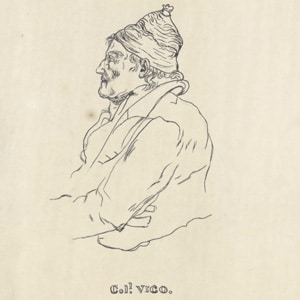
Francis Vigo (Dec 13, 1747 — Mar 22, 1836)
December 13, 1747Colonel Francis Vigo (Joseph Maria Francesco Vigo) was born Dec. 3, 1747, at Mondovi, Sardinia. As a young man he enlisted in the Spanish army and was sent to Havana and later to New Orleans where he participated in the Spanish occupation of what later was to become the Louisiana Territory. After his discharge, he remained in America and became a trapper and fur trader, operating primarily in the Vincennes and St. Louis areas. During this time, he developed a good relationship with the Indians and understood them well. He prospered as both a trader and a merchant and became quite wealthy.
He rallied to the American cause and, after the recapture of Vincennes by the British, volunteered his services to General George Rogers Clark as a spy for the Americans, but he was captured by British-allied Indians. While captive he ate the paper (a letter given by Clark) which otherwise would have convicted him. Through the efforts of Father Gibault and Vincennes townspeople, Vigo was freed. He immediately set out for St. Louis and Kaskaskia, where he informed Clark that the British occupied Vincennes and how strong they were. At this time, Clark was short of funds and almost was unable to lead a campaign.
Immediately Vigo loaned him $11,000, which led to a successful campaign and freedom. But Vigo never was repaid in his lifetime. In his last will he made a request that if the government ever honored his claim, then $500 from his estate should be used to purchase a bell inscribed “presented by Francis Vigo” for hanging in the Vigo County Courthouse.
In 1887 the six foot high bell finally arrived with a $500 contribution from a relative of Vigo’s (T. C. Buntin) and $2,500 from the authorization of the Vigo County Commissioners. The bell hangs from the high tower of the courthouse and is declared by some as “the Liberty Bell of the Northwest territory.”
Vigo settled in Vincennes and in 1793 married Elizabeth Shannon, a sister of “Alice of Old Vincennes.” They had no children.He was a prosperous fur trader and at one time became very rich, but unfortunately at the time of his death he was a poor man. He died in Vincennes on March 22, 1836, and was buried in the City Cemetery in Vincennes.
Indiana legislature conferred upon the county the name of Vigo (to be pronounced “vee-go”) in honor of Colonel Vigo, then a resident of Vincennes. The name was approved Jan. 21, 1918.
Vigo visited Vigo County for the last time on July 4, 1832.

High praise has been given to Colonel Francis Vigo for his bravery and assistance during the conquest of the Northwest Territory. A memorial statue of him by John Angel occupies a site overlooking the Wabash River in the Vincennes Memorial to George Rogers Clark.
A commemorative stamp and postcard were issued in honor of Francis Vigo on May 24, 1986.
There is a Francis Vigo American-Italian Club (organized in 1972) in Vigo County whose purpose is to help its members to have an appreciation of their heritage as descendants of immigrants and an awareness of their customs and culture. This club has contributed funds to replenish a room in honor of Francis Vigo in the Vigo County Historical Museum.
Francis Vigo (Dec 13, 1747 — Mar 22, 1836)
Francis Vigo was an Italian settler who assisted George Rogers Clark in his conquest of the Old Northwest. Vigo County is named for him. -
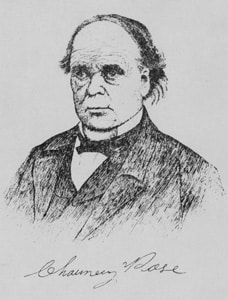
Chauncey Rose (Dec 24, 1794 – Aug 13, 1877)
December 24, 1794Special To The Tribune-Star
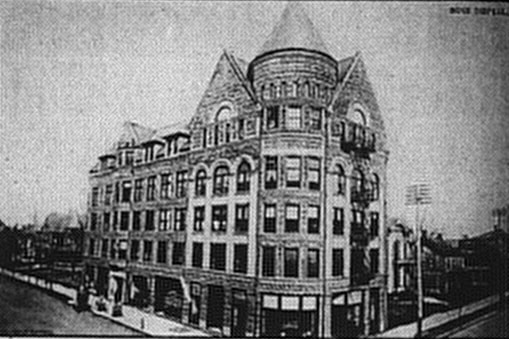
For nearly 70 years, one of the many legacies of Chauncey-Rose was the continuous benefit to Vigo County’s indigent and ailing people, providing thousands of them with medical assistance.
Chauncey Rose was born Dec. 24, 1794, and died Aug 13, 1877. He journeyed through Indiana, Illinois, Missouri, Kentucky, Tennessee and Alabama, but finally selected the Wabash Valley as his future home.
He had tremendous business acumen and was involved in many businesses, railways and banking.
He was a great philanthropist, particularly trying to help the poor who had illnesses. In his will, he stated a dispensary should be built one year after his death and left $75,000 for that purpose.
He carefully selected seven board members who would have the same feelings and would carry out his wishes. The board could use $15,000 for a lot and building and $2,000 for medicines.
The balance of the funds was to be preserved as a permanent fund and the interest income be used for the dispensary.
The Rose Dispensary Corp. was formed July 10, 1878, and in 1892 purchased the ground on the northwest corner of Seventh and Cherry streets.
On that spot was built an imposing five story Rose Dispensary building, which opened for business in 1899.
Paul R. Dietz of Chicago was the architect. The style reflected the late 19th century French Chateaux type; at the same time, it also reflected the Romanesque style. In the center was a circular bay capped by a tall conical roof which is balanced by projecting gabled pavilion, one on Cherry Street and ending in another gabled bay. Architecturally, it was a beauty.
In the 65 years of the dispensary’s operation, it filled 226, 766 prescriptions and cared for 301, 307 patients.
It offered a variety of free medical aid for indigent patients. Dr. J.V. Richart was the staff physician and Dr. Fred Isaacs was the staff dentist. Dr. Earl Shields handled eye, ear, nose, and throat patients.
As Rose Dispensary was a public trust, annual reports were submitted to Vigo Circuit Court.
With the change of time and needs of people, the dispensary could not be run as intended and was demolished in 1972. The site is now Oakley Plaza, a part if Indiana State University campus.
This dispensary helped the poor far more than 65 years but the philanthropy of Chauncey Rose extended far beyond that. He will always be remembered for his vision and generosity to the city of Terre Haute.
Historical Treasure is contributed by the Vigo County Historical Society. Website at indstate.edu/community/vchs.
Chauncey Rose (Dec 24, 1794 – Aug 13, 1877)
Chauncey Rose was a great philanthropist and local booster. His money and drive enabled the building of a free dispensery and what would become Rose-Hulman -
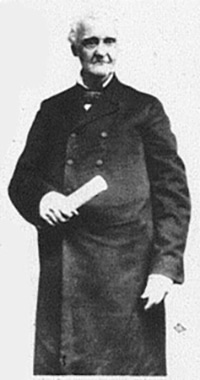
Colonel Richard Thompson (June 9, 1809 – Feb 9, 1900)
June 9, 1809Special to the Tribune-Star
Col. Richard W. Thompson was born in Virginia on June 9, 1809. He was of Scot-Irish origin, and both his grandparents served in the War of Independence. His mother died when he was 10, and his father remarried a grandniece of George Washington.
At age 20 he left home and came to Indiana. After founding and teaching at Lawrence Seminary, he acquired a law library, studied law for three years, was admitted to the Bar in 1834 and set up his law practice and residence in Terre Haute. On May 5, 1836, he married Harriet Gardiner of Columbus, Ohio, who bore him eight children.
Thompson was a born orator and wrote brilliantly. He was elected a Whig in the Indiana Legislature, re-elected in 1835 and 1836, and then went on to serve in the State Senate. He served as Lt. Governor and was elected to Congress in 1841. He held the commission of Captain and was a judge in the Circuit Court. He was bestowed the titled of “Colonel” and was always referred to in this manner.
Col. Thompson befriended many powerful men of his time including Abraham Lincoln with whom he became very close. During the Civil War, he was appointed provost marshal in raising troops and at the end of the War, he served as Collector of Internal Revenue. In 1877 he was called to serve as Secretary of the Navy under President Hayes. He resigned from the Navy to take charge of the Panama Canal Co. He also served as a general counsel for the Vandelia Railroad Co. for 25 years.
Always an advocate for progress and education, Thompson served on the board of trustees of Indiana State Normal School (now Indiana State University) and Rose Polytechnique (Rose-Hulman of today).
He served his country, his state and Terre Haute with great dignity, honor and brilliance to the end of his life. After a brief illness, he died on Feb. 9, 1900, four just months before his 91st birthday. Several framed photographs of Col. Richard Thompson are a part of the Vigo County Historical Society collection.
Colonel Richard Thompson (June 9, 1809 – Feb 9, 1900)
Richard Thompson was a prominent local politician who eventually served as Secretary of the Navy. -
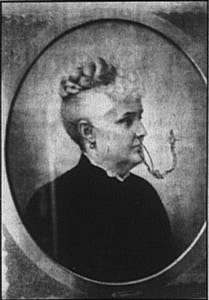
Clara Fairbanks (Aug 14, 1840 – Feb 9, 1911)
August 14, 1980By Dr. Dipa Sarkar
Clara Collett Fairbanks was born Aug. 14, 1840 to Stephen and Sarah Collett and was the youngest of nine children. Her father was a state senator representing Vermilion and Parke counties. She lost her father

She was married to a local, very successful businessman, Crawford Fairbanks, on Dec. 31, 1872 and lived on Cherry Street. They had only one daughter, Sarah.
Clara was deeply religious, devout woman and lived a very simple, but busy life. She was always interested in women’s causes and particularly their health. She involved herself in many charitable organizations and donated a large amount of time and money, much of which was never made public.
In 1924, her loving husband Crawford Fairbanks built a large brick home at the corner of North seventh Street and Eight Avenue and dedicated it as a memorial to his wife. It was named Clara Fairbanks Old Ladies Home. It was a haven for aged women who were alone, rather poor, and needed care. It gave the older women comfort, shelter and dignity. Fairbanks kept $250,000 in trust to run this home. IN 1971, it merged with another women’s home, the Chauncey Rose Home, and existed until 1986. The home closed in February 1986 and the property was purchased by Union Hospital.v
In 1996, the home was demolished and a women’s health center was established in the building formerly occupied by the pathologist, Dr. Leon Blum. It was named Clara Fairbanks Women’s Health Center in honor of Clara Fairbanks for her lifelong dedication to women’s health and needs.
The facility is now housed within the Hux Cancer Center. This new center has all the modern facilities to serve the needs for health care, particularly breast cancer diagnostic care. Clara’s compassion, dedication and generosity of heart still lives on in the women’s health care facility. Union Hospital marked the site with a memorial wall containing the original cornerstone.
Portraits of Clara and Crawford Fairbanks hang in the Victorian Parlor on the Vigo County Historical Museum’s second floor.
Clara Fairbanks (Aug 14, 1840 – Feb 9, 1911)
Clara Fairbanks was a wealthy philanthropist with a special interest in women and their healthcare. Her husband, Crawford Fairbanks, created the Clara Fairbanks Old Ladies Home as a memorial. -
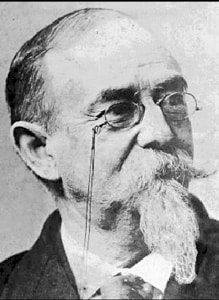
James Farrington Gookins (Dec 30, 1840 – May 23, 1904)
December 30, 1840By Sherri Wright
James Farrington Gookins was born in Terre Haute on December 30, 1840. He ranks among the most distinguished Indiana artists of the 19th century. Gookins was described as a prolific painter and a dynamic but restless personality. His works included portraits, picturesque scenes of life among the river banks in mid-western, mountain landscapes set in either Colorado or in Alpine regions of Europe, and in marked contrast, a number of interesting, but rather enigmatic, fanciful paintings portraying fairies impishly frolicking amidst thick clusters of colorful flower blossoms. His painting Hummingbird Hunters is one of the highlights of the permanent collection of the Swope Art Museum. In addition, he sketched convincing scenes of living experiences, many of which were lithographed and circulated and served as visual evidence of events of the day. Gookins was one of the first Indiana-born artists to study in Europe and he, along with John Washington Love (American 1850-1880) opened the first professional art school in Indiana. The Indiana School of Art, although short-lived in Indianapolis from 1877-1879, listed among its students William Forsyth (American 1854-1935). Forsyth would also study at the Royal Academy and return to Indiana to become a famed “Hoosier Group” artist and one of the leading painters in the strong tradition of Indiana art which continues to this day.
James Farrington Gookins (Dec 30, 1840 – May 23, 1904)
James Farrington Gookins was an artist who created in many different mediums. He is probably most famous for helping design the Art Institute of Chicago -
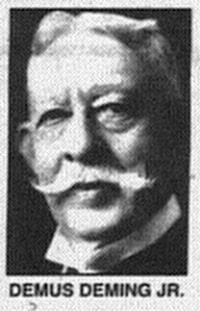
Demas Deming Jr. (April 4, 1841 – Mar 7, 1922)
April 15, 1841By Dr. Dipa Sarkar
In discussing Demis Deming Jr., great pioneer of Terre Haute, it is only fitting that I start with his illustrious father, Demis Deming Sr., a judge. He was born in 1787 in Wethers Field, Conn. His father, Captain Seth Deming (1748-1827), served with great distinction in the American Revolutionary War.
Demis Deming Sr. was the sixth in the line of descent from John Deming who came from England and settled in Connecticut. During the second war with Great Britain, Demis Sr. joined the army. At the end of the war, he resigned his commission. He was looking for his career in business and for awhile settled in Baltimore, but was attracted by the newly-opened west. When he moved to Terre Haute in 1818, he opened a dry goods store where “Clark House” stood at the corner of First and Ohio.
At this time, Terre Haute was just a sleepy town with a few log cabins. But he was a man of vision, who knew prosperity would follow. He began to buy lands, the first of which was recorded in 1819, and eventually acquired a large land empire. He worked on the public highway and served as a judge of elections. He helped build the first courthouse. In 1822, he represented Masons in Grand Lodge. He was an associate judge for several terms. He became the first president and held the position for the next 18 years. In 1849, he married Sarah Patterson, who also came from another illustrious family of Pennsylvania who immigrated from Ireland.
In 1814, her father, Arthur Patterson relocated to Vincennes and then to Parke County, where they were married. They had four children, the first being Demis Deming Jr. (1841-1922), who played a vital and leading role in the progress of Terre Haute. He was educated in local schools and Waveland Academy. He joined his father’s banking business at 16 and was known as “Boy Banker.” He married Mary B. Floyd and after her death in 1893, he married Lillian R. Lohrmann, a widow with a daughter. He had no children in either of these marriages but he had a very loving relationship with his step-family.
He was a very able businessman and acquired vast amount of lands, which his father started. He became the president of Deming Land Co., vice president of Terre Haute Savings Bank and Terre Haute Gas Light Co.
When Rose Polytechnic Institute was founded in 1874, he became treasurer until his death. He had great friendships with important people and philanthropists of this area like Rose, Wiley, and others.
Demis Deming Sr. built his homestead on a very large lot at the northeast corner of Sixth and Poplar. A part of this square was sold to the school board, where Wiley High School was built, but the best part remained where the Methodist Church and YMCA were built later.
The largest city park of Terre Haute was named Deming Park, which was dedicated on July 23, 1921, in honor of Demis Deming Sr. The park has a total of 177 acres of land, which was sold by the family with all proceeds going for creation of Ohio Boulevard. The remaining money was donated to Rose-Hulman Institute.
The Demis and Sarah Deming memorial dormitory was the first residence hall constructed in 1926. Deming Street, a school, a former hotel and Deming Woods all bear the name of the generous family.
His father moved here with great pioneer spirit. With hard work, vision and hope, he helped shape this sleepy village to a prosperous city of today. His worthy son carried out his unfinished dream into reality, not only for his own family, but also by guiding others through his generosity, dedication, and philanthropy.
Demas Deming Jr. (April 4, 1841 – Mar 7, 1922)
Son of the famed Deming family, Demas Deming Jr. was a prominent philanthropist. He helped create Deming Park, named for his father, and provided money to create Ohio Boulevard. -
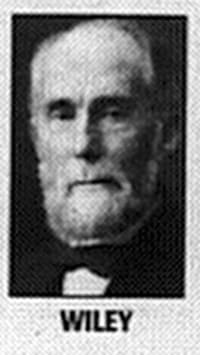
William Wiley (Dec 28, 1842 – March 24, 1927)
December 28, 1842By Dipa Sarkar
Special to the Tribune-Star
William H.Q. Wiley was born Dec.28 1842 in Rush County. In childhood, he suffered from “milk sickness,” which killed his brother. (The sickness came from a cow eating a kind of poisonous root that then passed on through its milk.) It caused him rather frail health and eventually rejection by the military service.
Much of Wiley’s childhood was spent in clearing the forest for the family farm. When he was 9 years old, he attended a school in Marion County. He worked on his father’s farm until he became 17 and then left to achieve higher education. He entered Butler College on Sept. 29, 1857 and obtained his bachelor’s degree in 1864. After receiving his master’s degree three years later, he took business courses at Commercial College of Bryant and Stratton, Indianapolis. That fall, he taught in the Stateline Academy at State Line City. In 1865, Wiley accepted a position at the Fourth District School in Terre Haute. Thus began a long and faithful service in the field of education.
William Wiley was a man of outstanding capability, a dedicated educator, leader and organizer. He was a man of futuristic ideas and vision. His abilities were recognized very early and in one year, he became a teacher at Terre Haute High School at Fourth and Mulberry Streets, which later became the high school bearing his name—Wiley High School at Seventh and Walnut streets.
When Wiley began teaching high school, the school had only 43 pupils and a few teachers. After serving as the principal for four years, he became superintendent of Terre Haute public schools. He began that position in 1869 and continued for 37 years until his retirement. At that time, he was elected a member of the School Board and served for many years.
Wiley has been called “the father of Terre Haute schools.” Many of his students became outstanding in their fields of endeavor. They were inspired to participate in debating competitions. During his administration, Terre Haute students won state and national awards in the 1874 Indiana Exposition and the 1876 Centennial Exposition. The whole community endorsed his efforts, liberally donating funds for the expenses.
Books were a central part of his life. Wiley was always involved in the library. He was “the moving spirit” in the development and expansion of the Emeline Fairbanks Memorial Library. The cupola of Wiley High School still stands in front of the public library honoring this great educator.
One of his great interests was the Terre Haute Literary Club. He wrote about 40 papers and only a few months before his death, he was still working on a paper to be read on April 25, 1927.
Wiley had been a member of the Vigo County Historical Society and remembered this organization in his will. His bequest was a silver sugar bowl, creamer, tea and coffee pot, which were formerly a property of Colonel Francis Vigo.
On Aug. 10, 1865, William Wiley married Eliza Brown and they had on son and daughter. His wife died on Aug. 2, 1916, and four years later, he married Sue Gfroerer, a kindergarten teacher. Wiley passed away on March 24, 1927. At his death, Terre Haute lost a great teacher, community leader, educator and visionary.
A framed photograph of William Wiley is included in the Historical Museum’s current exhibit, “Reflections, Vigo County High Schools as They Were.”
William Wiley (Dec 28, 1842 – March 24, 1927)
William Wiley is considered the father of Terre Haute schools. Eventually Wiley High School would be named for him. -
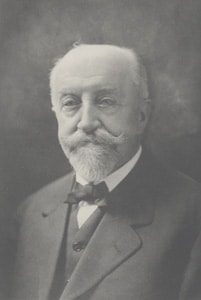
Adolph Herz (Aug 7, 1843 – March 20, 1901)
August 7, 1843Adolph Herz was prominent businessman, civic leader
For more than 50 years, Adolph Herz was a prominent citizen and leading merchant in Terre Haute. He was born Aug. 7, 1843, in Wurtenberg, Germany. At age 23, he came to the United States to have a better opportunity in life.First he came to New York, later to Huntington, Ind. and moved to Terre Haute in 1867. At first, he worked with Joseph Erlanger, a merchant tailor.
Two years later, in 1869, Herz opened his own business, “Herz Bazaar” on South Fourth Street, just north of Ohio Street. He sold ladies’ skirt hoops and other furnishings. His business prospered and he moved to the Deming building, just east of Sixth Street and Wabash Avenue. In 1872, Herz married Pauline Einstein of New York and raised four children. They made their home at 309 S. Sixth St.
In 1907, William Riley McKeen erected a six-story building at the corner of Seventh Street and Wabash Avenue. It was a very attractive structure with green river stone trim, wide aisles, mahogany counter tops and most beautiful fixtures.
In this new building, Herz moved his large stock of ladies’ apparel, furnishings, notions, rugs, curtains, and leather goods, and employed 250 people. His new 646-652 Wabash Ave. location also had an elegant tea room where businessmen and women shoppers had enjoyed their lunch served so expertly. Herz constantly sought to improve his business and to keep his employees happy.Although Herz was an astute businessman, he was very civic minded, finding time to devote to industrial, charitable and benevolent organizations. He was one of the promoters of the Commercial Club, later known as the Terre Haute Chamber of Commerce, serving as its president. A director of Terre Haute First National Bank, Herz was a longtime trustee of the Rose Orphan Home, a pioneer of the Terre Haute Retail Merchants Association, and an active supporter of the Terre Haute Social Settlement, a charitable organization.
Always ready to undertake responsibility and support civic betterment and relief of unfortunates, Herz extended benefits to his employees and Social Welfare for his co-workers.
After a long and productive business and civic life, Herz died on Dec. 17, 1917, at age 74. According to the headline in the local paper, “Terre Haute lost a man loved by people.” His business was run by his son and others, but ultimately the building was razed in 1971.
There are a few people who remember Herz, but many remember with nostalgia the beautiful A. Herz store.
Contained in the archives of the Vigo County Historical Museum is a “Memoriam” which was published at the time of the death of Herz. It is a large printed document consisting of a biography, photograph and “resolutions of respect” from numerous organizations and individuals in the community.
Adolph Herz (Aug 7, 1843 – March 20, 1901)
Adolph Herz was a local merchant who founded the Herz Department Store in downtown Terre Haute. -
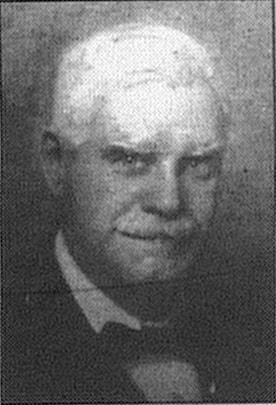
Crawford Fairbanks (April 25, 1853 – May 28, 1924)
April 25, 1853By Dr. Dipa Sarkar
Crawford Fairbanks, the second son of Emeline and Henry Fairbanks, was born in Terre Haute in 1842. He comes from a family of famous lineage.
His ancestor, Jonathan Fairbanks came from Sowerly in Yorkshire, England to Boston Mass in 1633 and settled in Dedham, where he built the noted “old Fairbanks House” in 1636 which is still standing as an ancient landmark, the oldest dwelling house in New England. It remains historically famous is the object of great interest.
Crawford Fairbanks was educated in public schools and left home when he was 17. He enlisted in the Indiana Infantry, 129th Division during the Civil War and became a lieutenant. After the war he returned to Terre Haute and began his successful business career.
He soon became a partner in Hulman and Fairbanks distillery and built the American Board Co. in Elgin, Ill. He operated the Terre Haute Distillery, organized and was president of the T.H. Brewing Co., which became one of the 10 largest breweries in the U.S. He was also president of the Diamond Paper Co. of Anderson; Haverhill paper Co., vice president of Chicago Paper Co., Indiana Gas Co., and Piermont Paper Co. of New York. He owned an interest in the French Lick Hotel, was on the board of directors of the Monon Railroad and was a main stockholder of the Terre Haute Tribune. In 1910, he purchased the Tribune and two years later he built the Tribune building.
He also held interests in Standard Wheel Co., Wabash Realty Co., the Terre Haute Gazette, the Terre Haute House and the Grand Opera House. He was an avid race fan and raised horses.
He married Clara Collett, also from a well-known Terre Haute family, and they had only one child- a daughter, Sarah.
Fairbanks was one of the wealthiest men in the state and also became one of the best known politicians in this city and Indianapolis. He was a very generous man in his time and became involved in many philanthropic projects. He and his brothers donated land to the city for Fairbanks Park and Dresser Drive, which are still enjoyed by the people of Terre Haute.
In 1906, he gave the city the Emeline Fairbanks Memorial Library in memory of his mother; in 1924 the Clara Fairbanks Home for Aged Women in memory of his wife, Clara, who died in 1911. Last week, the Clara Fairbanks Women’s Center was dedicated in her memory.
He was an avid entrepreneur and a shrewd businessman but one of the most generous and public spirited citizens the city of Terre Haute has produced. Fairbanks died May 28, 1924 at the age of 81 and we still cherish his memory with fondness and respect. Handsome portraits of both Clara and Crawford Fairbanks hang in the upstairs parlor of the Vigo County Historical Museum.
Crawford Fairbanks (April 25, 1853 – May 28, 1924)
A member of the famed Fairbanks family, Crawford owned several different enterprises including the Tribune. He was also a great philanthropist who donated land for Fairbanks Park. He also founded the city's first public library named after his mother Emmeline Fairbanks -

Eugene V. Debs
November 5, 1855By Dipa Sarkar
Much has been said and written about Eugene V. Debs, an extraordinarily gifted man who was in so many ways so far ahead of his time. He was without a doubt the father of the industrial unionism in this country, although the concept was not firmly established until after his death.
As a labor organizer, his talents bordered on genius. He helped build the railway unions into a powerful economic force. He was a writer, lecturer, passionate advocate of the under-privileged- the hero of millions of working people throughout the world.
His Vision of the Society- a society in which there is brotherhood of races working together in peace and prosperity- has not been realized. But he insisted that we keep the dream before us. He knew the eternal truth voiced by a prophet: “Where there is no vision, the people perish.”
Terre Haute has been blessed with this illustrious son-Eugene Victor Debs, who was born in 1855 in this frontier town of 6,000. His father, Jean Daniel, and mother Marguerite Daisy, immigrated to the United States from the Alsace region of France. His bookish father named his son after famous authors Victor Hugo and Eugene Sue.
His parents ran a small grocery store from the front room of their house which brought them a modest income. There were four sisters and two brothers, and they all learned to speak French and German from their parents.
In 1879, when Eugene was 14, he left school as it bored him and, being the first son, he had to earn money to help the family.
He always loved railways. He found a painting job and then a night fireman’s job in a 70 mile stretch from Terre Haute to Indianapolis. It is here he learned all of the hardships and dangers of the railway men.
Late in 1874 he gave up but never lost fascination for railroad life. He became a billing clerk in Terre Haute. He went through many different positions such as secretary of the Masonic Lodge, Vigo Lodge No. 16- a benevolent organization concerned with group insurance plans, railroad workers pay, safety measure and hours of work. He was editor of the lodge newspaper, The Magazine. He was also elected city clerk.
In 1885 he married Kate Metzel, daughter of a prominent druggist. They did not have children. Their relationship was described as cordial, but she did not approve of his activities.
There was a strong presence of another lady- his neighbor, Mabel Curry- whom he described as “Juno the divine.” She was very loving. She visited him in jail when his wife, Kate, did not.
In 1890, Eugene and Kate moved to their lovely home at 451 N. Eighth St., which now is a national historical landmark and headquarters for the Debs Foundation.
He helped found a social democratic party and ran as their nominee for president of the United States in 1900, 1904, 1908, and 1912, and also in 1920 by acclaim while in prison.
He was a pacifist and when war broke out in 1914, he protested violently.
In June 1918 in Canton, Ohio, Debs was charged with violating an espionage act and spent time in an Atlanta prison. After his release, he lived with Kate about six months, but his health was broken.
He died Oct. 20, 1926, in Lindlahr Sanatorium just outside Chicago; Highland Cemetery of Terre haute bears a simple marker where his ashes were interred.
Debs is remembered as the brightest star of American Socialism. He fought for ideals such as voting rights for everybody, civil rights for women, national health insurance, bargaining collectively and the right to strike.
Terre Haute is certainly blessed with this illustrious son who lighted our paths more than a hundred years ago. A visit to his home with all the memorabilia, documents and pictures bearing his rich legacy will be a worthwhile experience.
Eugene V. Debs
Arguably Terre Haute's most famous native son, Eugene V. Debs was a leader for the common man. He first became famous for leading the railway workers during the infamous Pullman Strike. He then ran as the Socialist Party candidiate for President several times and recieved six percent of the vote in 1912. -
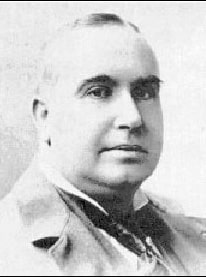
Paul Dresser (April 22, 1857 – Jan 31, 1906)
April 22, 1857By Dr. Dipa Sarkar
Vigo County Historical Society
This little treasure—a miniature model of the Paul Dresser Memorial Park entrance—is carefully and neatly tacked away in the attic at the Historical museum of the Wabash Valley, along with countless other invaluable treasures.
Paul Dresser was born in Terre Haute to Paul and Sara Mary Schneppes Dreiser on April 22, 1858 (as recorded in St. Joseph Church baptism records).
He died in 1906 and was buried in St. Boniface Cemetery, Chicago, by the graves of his parents.
His grave was unmarked 16 years, but now a large boulder with a metal plate marks the resting place of this great songwriter and famous son of the Wabash Valley. His most famous song was “On the Banks of the Wabash,” adopted as the state song by the Indiana Legislature in 1913.
On Sept. 13, 1968, the Terre Haute Tribune-Star wrote, “A historical marker designating the Paul Dresser home as a state shrine and a memorial has been erected by the Indiana State Highway Department at the late composer’s residence in Fairbanks Park here.”
A memorial association was founded in 1913. In November 1922, Theodore Dreiser, Paul Dresser’s famous author-brother, sent the memorial association his recommendation for the design of the monument. He wrote, “I favor a fountain with an urn on top containing Paul’s ashes.”
He also communicated to Governor McCray the family’s wishes that a memorial be erected in Terre Haute and no where else (Lafayette was another choice then). Gov. McCray signed the proclamation on April 24, 1922.
By 1931, the memorial remained a vague idea. The memorial association worked rigorously with an idea of improving the river front and building a Paul Dresser Memorial Park and Drive.
They raised $30,000 to erect the memorial at the west entrance to the city with two huge candle lights and an arch.
On Jan. 29, 1941, the Terre Haute newspaper wrote enthusiastically about the first phases of development and landscaping. The idea of the park appeared to be a very good one. Since it was placed near the school, the Dresser playground was full of children very happy with the supply of equipment provided by the memorial association.
In the summer of 1940, the association turned the responsibility over to the Terre Haute Park System. Later, the park system transferred it to the Church Federation with a 25-year lease for the park.
However, the park never was completely developed with its original plan of the Paul Dresser Drive, a monument, landscaping, and a park with all recreational facilities. Gradually, through lack of care and supervision, the place fell prey to vandalism. It was removed to make way for the approach to the new river bridge.
Whether it was lack of money, interest or local politics, a beautiful dream became only a memory. Only a model of a memorial remains.
My hope is that a traveler coming to Terre Haute will share the poet’s dream, visit his home and ponder “a gleam of candle through the sycamores” and watch the “waters of the Wabash gliding past.”
Paul Dresser (April 22, 1857 – Jan 31, 1906)
One of the most popular producers of pop music from the late 19th century, Paul Dresser would achieve lasting fame as the composer of Indiana's State Song: "On the Banks of the Wabash, Far Away." -
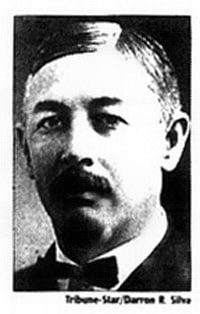
Henry C. Steeg (May 1, 1857 – Nov 21, 1911)
May 1, 1857Mayor Henry C. Steeg brought beauty to Terre Haute
Henry C. Steeg, mayor of Terre Haute from 1898 to September of 1904, was the son of German immigrants.
His father worked in the stone quarries in Putnam County. Born in 1857, Henry had three brothers and two sisters.
He studied at common schools and Roanoke College in Salem, Va. After finishing college he worked at his father’s lime manufacturing company and took over operations after his father’s death. Steeg married Anne Marsh, also of German ancestry, and had four sons and one daughter.
Steeg constructed the first stone pike roads in Putnam County in 1882. He moved to Terre Haute in 1885 to work as a general contractor and bridge builder. He founded a firm called Reidman and Steeg in 1887 and became its vice president. He also served as the president of People’s Brewing Co.
Steeg was a very active member of many notable organizations and clubs including the Elks, Eagles, Masonry, Businessman’s, German’s, and Red Men’s clubs. He was elected city councilman in 1888 and in 1898 he became mayor of Terre Haute, serving until September, 1904.As mayor, Steeg was considered very effective and brought about many improvements. One of his great contributions to the city was the acquisition of land at the junction of Wabash Avenue and 14th Street to build a city park.
This beautiful park on the busy national highway was appreciated not only by local residents but by the people traveling across the nation who sometimes stopped to rest there. The park was named Steeg Park in the mayor’s honor but the name was later changed to Gilbert Park.
From a very humble beginning, Steed succeeded in his personal and public life. By his distinct, and dedicated service to the people, he earned their love and respect and left a mark in the history of Terre Haute.
A framed photograph of Mayor Henry Steeg is part of the Vigo County Historical Museum’s “Celebrate the Century”exhibit chronicling Terre Haute’s past 100 years.
Henry C. Steeg (May 1, 1857 – Nov 21, 1911)
Henry C. Steeg was Terre Haute's mayor at the turn of the century and helped create Terre Haute's park system. -
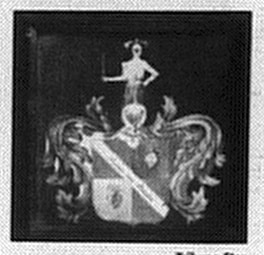
Amalia Kussner (March 26, 1863 – May 31, 1932)
March 26, 1863Historic tile done by famous miniature artist
By Dr. Dipa Sarkar
Special to the Tribune-Star
This gorgeous, Had-painted tile was made by Minton Manufacturer around the 1870s. Recently the Vigo County Historical Society acquired this tile and it will be displayed for your pleasure.
On the back of the tile is the manufacturer’s stamp and handwritten areas. There is the signature of the famous miniature artist, Amalia Kussner of Terre Haute. The tile measures 6-by-6 inches and has an ebonized frame. It is painted on Ivory and the color of the delicate paint is in superb condition. ON the tile is an engraving of “Animo Non Astutia” The Scottish arms stand for “Courage not Cunning” and was named for Sir Adam Gordon.
Kussner was born in Crawfordsville, on March 26, 1863. She was born of immigrant German parents, Lorenz and Emilie Kussner. Her parents moved to Terre Haute when she was still a baby. Her father was a gifted musician and trained as a piano repairman. He bought the Old State Bank building, using it as their residence and ran a music store called “The Palace of Music” at 213 Ohio St. There, he would repair musical instruments.
Amalia was the youngest of three children and all of them were very gifted. Her sister, Louise, was a vocalist and her brother, Albert, was an accomplished pianist/composer. All of them had a very good education and spoke German, French, Spanish and English fluently. At age 6, Amalia was admitted to St. Mary-of-the-Woods and, under the tutelage of Sister Maurice, founder of the college’s museum, she received all the encouragement as a talented child artist. Later, she graduated from the Public High School. After graduation, she went to New York and studied under Madam de Silva and Mrs. Bradshaw. However, she received no formal training as a miniature portraitist. She was determined to make this hundreds-years-old delicate art popular in America.
At this time, artists were experimenting with impressionism, symbolism or cubism, but Amalia was determined to revive this delicate art, which was getting crushed with the advent of the camera.
She used rejected ivory piano keys as her base material on which she painted miniature portraits, using delicate, pastel colored paints. Sometimes, she used porcelain tiles and painted on them, which were used around the fire-places.
In the early 1890s, she lived in New York with her mother and brother. She tried to make a living as a miniature portraitist and, with her persistence and talent, it became quite popular among the wealthy elitists of New York.
In 1897, she was commissioned to paint Edward, the Prince of Wales who later became Edward VIII. In this portrait, he was painted as the Knight of Malta.
In 1899, she was invited to Russia and painted miniature portraits of the czar, Czarina Alexandra, as well as the Grand Duke Vladimir’s wife, Maria and Grand Duchess Ellen.
After Russia, she went to South Africa and made the portrait of the Diamond King, Cecil Rhodes.
Upon returning from Africa in 1900, she married Capt. Charles Du Pont Coudert of New York. Amilia did little painting after her marriage. In 1914, she settled down in Windlesham Hall, an English manor near London and became a British citizen. The couple had no children. She died in Switzerland in 1932 of a lung ailment.
Amailia Kussner led a fascinating, life and brought back an almost dying art for all to enjoy and appreciate. It only took her talent, tenacity and enthusiasm.
Amalia Kussner (March 26, 1863 – May 31, 1932)
Amalia Kussner was a world famous artist who specialized in miniature portraits often painted on rejected piano keys or tiles. -
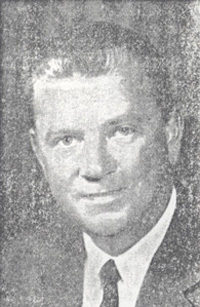
Chapman J. Root (Nov 22,1864 – Nov 20, 1945)
November 22, 1864World-famous Coke bottle had its Root in Terre Haute
The classic and distinctive 6.5 ounce green glass bottles with the slogan “Things go better with Coke” brought name and fame to Terre Haute because of a brilliant industrialist, Chapman Jay Root.
To serve its new soft drink, Coca-Cola, in a distinctive bottle, the company asked for designs in the early 1900’s. The Root Glass Co. of Terre Haute submitted a design for the bottle that was immediately accepted by the Coca-Cola company for its unique shape and design, and a patent was obtained. Earl Bean, recognized as its designer, reportedly got the idea from the cocoa bean.
Coca-Cola, distributed in its uniquely designed bottle, became very popular all over the world. The bottle and the drink became integral parts of each other.
Root was born Nov. 22, 1864 in Wayne County, PA., and was educated there. He started to work in a foundry in Ohio but joined the Ravenna Glass Co. later.
Because of his quality work, he became the company’s vice president and treasurer in a year. But then he moved to Milwaukee as the manager of the Cream City Glass Co.
In 1901, Root moved to Terre Haute and founded the Root Glass Co. at the northeast corner of Third and Voorhees streets. From the beginning, he manufactured glass bottles able to stand high internal pressure.
In 1905, he built another plant at Maple Avenue and 15th Street to manufacture fruit juice containers. This plant was later sold to the famous Ball Mason Canning Co.
The original plant was destroyed by a tornado on March 23, 1913. But with his indomitable spirit, Root inspired his people, rebuilt the factory and in the same year, submitted the design of the Coca-Cola bottle that put Terre Haute on the map.
In 1932, Root’s company merged with Owens-Illinois Co. and became the largest glass manufacturer in the world.
A devoted family man, Root was married to the former Ellen Agnes Ruffle of Ravenna and had one son who died in an air accident in 1932, leaving a grandson, Chapman Shaw Root.
Root was philanthropist and was involved with the education and character building of youth, and worked with Boy’s Clubs and Boy Scouts of America. He was a member of the Masonic lodge and many civic organizations and institutions, including Rose Polytechnic of Terre Haute. He died Nov. 20, 1945.
The Root Glass Co. does not exist today, but a commemorative plaque can be seen at the corner of Third and Voorhees streets.
The Vigo County Historical Museum at 1411 S. Sixth St. has an interesting exhibit of Coca-Cola memorabilia as well as extensive information and photograph files available for research.
Chapman J. Root (Nov 22,1864 – Nov 20, 1945)
Chapman J. Root was a local businessman who's glass company created the iconic Coca-Cola bottle. -
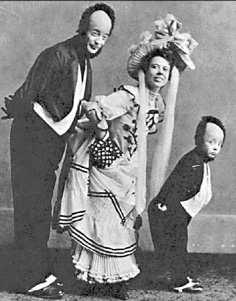
Joseph Keaton (July 6, 1867 – Jan 13, 1946)
July 6, 1867By Sherri Wright
Joseph Keaton was born near Prairie Creek in 1867. They moved to Terre Haute in the early 1870s where parents managed The Henderson House hotel that was located at 209 South 4th Street. Young Joe located a shoe shine stand in front of the Naylor Opera House where he perfected his acrobatics to become (in his words) “boss bootblack on Paul Dresser’s “Wabash Avenue.” He left his birthplace to try to get rich squatting land in Oklahoma. Joe was infatuated with show business and Miss Myra Cutler, daughter of Frank Cutler of the Cutler-Bryant Medicine Show. So he joined the show in 1892. After he and Myra eloped in 1894, “The Two Keatons” began traveling on their own. Their son Joseph Frank “Buster” Keaton was born “on the road” in Piqua, Kansas on October 4, 1895. A quote from the elder Keaton stated, ‘His cradle was my trunk, his playground was the stage and all his friends were actors.” It wasn’t long until young Buster joined his parents act. In 1899, en route to New York City, the Keaton family stopped for a two-week visit in Terre Haute Joe performed his famed acrobatic “Man with the Table” act. It has been said that three-year old Buster made his first solo appearance onstage. Buster, of course went on to appear in silent films and “talkies,” and television.
Joseph Keaton (July 6, 1867 – Jan 13, 1946)
Keaton was Vaudeville preformer who's "man with a table" act was widely popular. His son, Buster Keaton, would go on to new heights as one of the silent film era's top stars. -
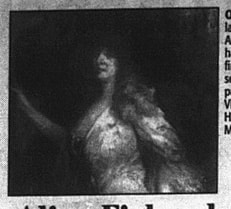
Alice Fisher (Jan 16, 1869 – June 27, 1947)
January 16, 1869Alice Fisher had a passion for theater
Alice Fisher was born on Jan. 16, 1865, in Terre Haute, where she also attended school. Fisher had a passion for theatre and appeared in amateur productions when she was only 8 years old. In 1879, she, gifted soprano Helen Jeffers, and Hoosier Jenny Lind formed the Morris Hughett Concert Co. They were escorted throughout Indiana and Illinois by Eugene V. Debs, then a city clerk.
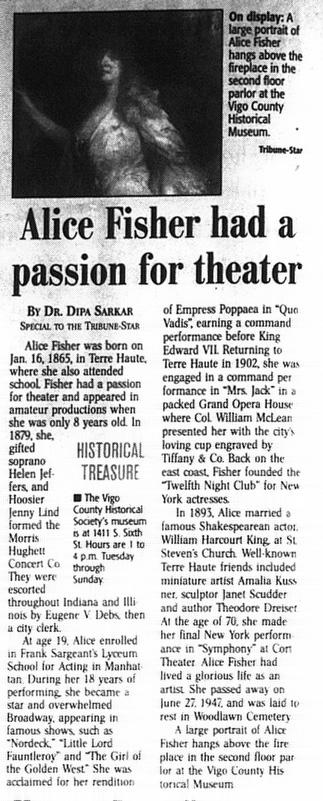
In 1893, Alice married a famous Shakespearean actor, William Harcourt King, at St. Steven’s Church. Well –known Terre Haute friends included miniature artist Amalia Kussner, sculptor Janet Scudder and author Theodore Dreiser. At the age of 70, she made her final New York performance in “Symphony” at Cort Theatre. Alice Fisher had lived a glorious life as an artist. She passed away on June 27, 1947, and was laid to rest in Woodlawn Cemetery.
A large portrait of Alice Fisher hangs above the fireplace in the second floor parlor at the Vigo County Historical Museum.
Alice Fisher (Jan 16, 1869 – June 27, 1947)
Alice Fisher was a popular and famous actress who performed all over the world including Broadway. -
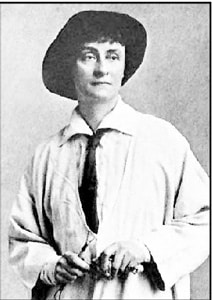
Janet Scudder (Oct 27, 1869 – June 9, 1940)
October 27, 1869By Sherri Wright
Janet Scudder was born Netta Deweze Frazee Scudder in Terre Haute in 1869 to a poor family, but knew from the time she was small that she wanted to pursue a career in art. She received her first lessons (drawing) with her childhood friend (and another future Terre Haute artist) Carolyn Peddle Ball. These lessons were private lessons from Professor Ames at Rose Polytechnic Institute. Through encouragement from teachers and sacrifice by her family, she was able to study at the Cincinnati Academy of Art at the age 18. It was there that she changed her first name to Janet. She found employment with Lorenzo Taft for his project to produce the plaster decorations for the Columbian Exposition (1893 Chicago World’s Fair,) acquiring valuable technical skills. From there she persuaded Frederick MacMonnies, a well-known American sculptor working in Paris, to permit her to study with him. It was during a second trip to Europe, financed by a wealthy friend’s family, that she discovered her desire to create garden and fountain sculpture that would please and delight her future clients as much as the subject pleased her.
This apprenticeship should have opened doors for her in employment and continuing education, but prejudice against women artists by those such as the great sculptor August Saint Gaudens slowed her progress toward her goal of making money from her art. Fortunately, her persistence in trying to attract the attention of Stanford White was successful, and, in 1900, she sold her first fountain, “The Frog Fountain” to him. Her career was launched and she went on to design sculpture for wealthy Americans like John D. Rockefeller.
In the Bicentennial celebration year, it is important to note that it was Terre Haute’s own Janet Scudder who was commissioned by Governor Samuel M. Ralston to create the Indiana Centennial Medal. The front of the medal was a beautiful representation of “the baby state of 1816 being welcomed to the Union with the historic state house of Corydon and the Constitution Elm in the background.” On the reverse side was the State Seal.
Scudder’s contributions were not limited to art. She spoke on behalf of Woman’s Suffrage and worked with the American Red Cross during WWI. She returned to America for the last time on the eve of WWII in 1939. She died in 1940.
Janet Scudder (Oct 27, 1869 – June 9, 1940)
A famous sculptor, Janet Scudder was especially known for her fountains and creating Indiana's Centennial medallion. -

Caroline Peddle Ball (Nov 11, 1869 – Oct 1, 1938)
November 11, 1869By Sherri Wright
Caroline Peddle Ball was born in Terre Haute on November 11, 1869. Her father had been hired by Chauncey Rose in 1851 as the master mechanic of the Terre Haute & Richmond Railroad. Caroline was the sister of John B. Peddle, later a professor of machine design at Rose Polytechnic and the father of future Terre Haute architect, Juliet Peddle. The family lived on North 9th Street and later at 502 North Center Street. Caroline had her first drawing lesson at Normal Training School and then studied privately with Professor William Ames of Rose Polytechnic (with her friend, Nettie (Janet) Scudder.) The two girls worked together to submit prize-winning exhibits at county and state fairs in Indiana and Illinois.
Caroline also studied briefly at the Pennsylvania Academy of the Fine Arts in Philadelphia and the Art Students League in New York under Augustus St. Gaudens and Kenyon Cox. Her work attracted the attention of Tiffany & Company, which employed her on numerous projects, including some of the World’s Columbian Exposition in Chicago.
Between 1895 and 1902, Ball lived abroad, first in Florence, then in Paris and Rome. While overseas she created interior decorations for private homes, and monumental sculptures such as her statue of “Victory” for the United States Building at the Universal Exposition in Paris in 1900.
Ball was a prolific exhibitor of her work until late in life. Her life-size sculpture of Russian-American actress Alla Nazimova drew tributes at the Philadelphia Academy of Fine Arts. Bird fountains, models of children, cemetery headstones, and decorative street lamps were specialties. Ball presented several prize pieces to Emeline Fairbanks Memorial Library. Some are located the Swope Art Museum. Caroline Peddle Ball spent her final years in Connecticut, where she died at the age of 68 in 1938.
Caroline Peddle Ball (Nov 11, 1869 – Oct 1, 1938)
Caroline Peddle Ball was a successful sculptor whose works were exhibited around the country. -
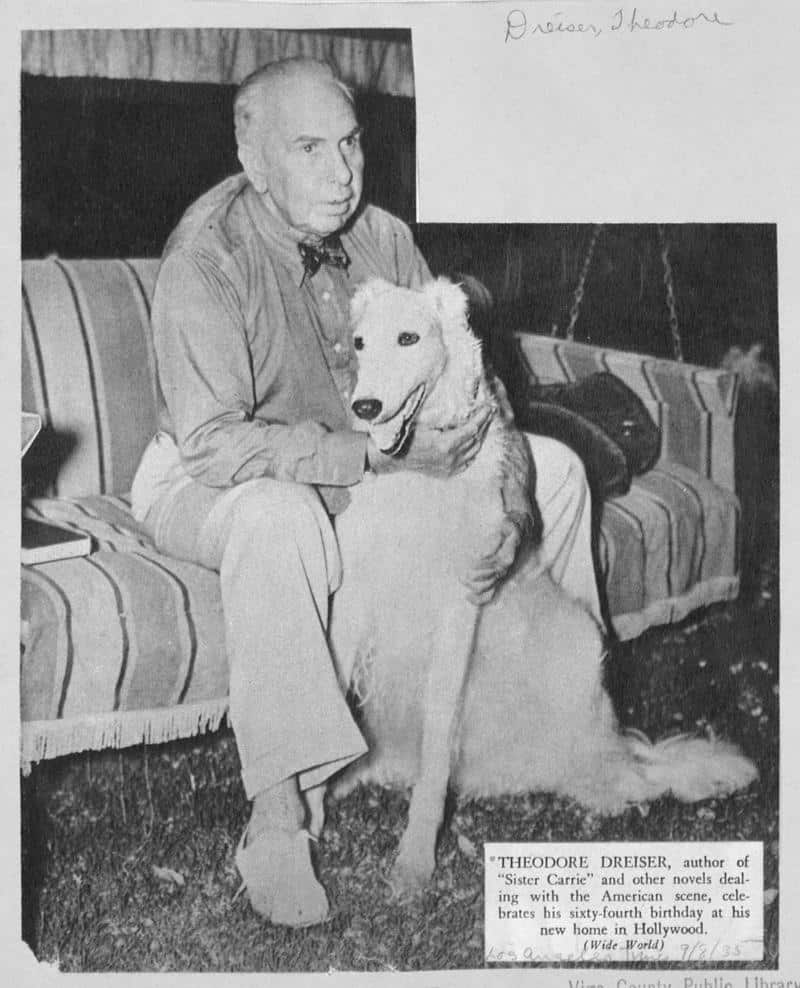
Theodore Dreiser (Aug 27, 1871 – Dec 28, 1945)
August 27, 1871Dreiser was literary pioneer
By Dr. Dipa Sarkar
Theodore Dreiser was a literary giant although hardly admired in his own time. After one of his great novels “An American Tragedy” was published in 1925, H. G. Wells wrote, “Dreiser is in extreme sense of the word, a genius.”
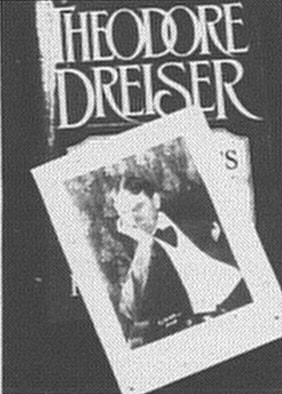
Dreiser never received the same warmth and adulation from his native state, however. When he received much national and international acclaim, Hoosiers were as confused as they had been with Eugene V. Debs
Theodore was born in Terre Haute on Aug. 27, 1871, to a German-Catholic immigrant father and a Mennonite mother. He was next to the youngest of 10 living children. His childhood was characterized by poverty, instability, and lack of supervision. In young Theodore, these influences made a deep impression, which was very much reflected in his later writings.
His early education started in St. Benedict’s School in Terre Haute and his formal education ended with a year at Indiana University. His writing career began as a newspaper reporter in several major cities. He was drama editor for the St. Louis Republic and editor-in-chief of Buttrick Publications in New York.
Childhood deprivations, frequent uprooting’s and insecurities kept him emotionally dependent on women, but he could never trust them. He was always seeking their unconditional love. He married Sara Osborne White, a school teacher from Missouri and divorced her 11 years later. For the next years he lived with his mistress, Helen Richardson, an actress whom he married only a year before his death. He had no children.
When his first novel, “Sister Carrie”, modeled after one of his sisters, was published in 1900, only 450 copies were sold but it rocked the literary world. It was condemned as immoral and shook the very foundations of Victorian Puritanism present at that time. It was not republished until 1907.
After that he wrote many novels, such as “Jennie Gerhard” (1911), “The Financier” (1912) and “An American Tragedy” (1925), two others, “The Bulwark” (1946) and “The Stoic” (1947) were published posthumously. He also wrote an autobiography “Dawn” (1913) and other essays and sketches.
Dreier’s hardship years and chaotic environment in childhood made him a very perceptive and sensitive individual. His portrayal of people and society separated by wealth and poverty, strength and weakness shaped a new direction in American literature. This realism paved the way to new classics like Steinbeck’s “Grapes of Wrath”. By the late 1930s his support of radical causes prompted the FBI to classify him as a dangerous and subversive individual. But as an American writer, he understood the social machine and was more than a chronicler of social forces.
He was a literary pioneer- a bridge between Victorian prudery and modern sensibility. If he had not published anything but “Sister Carrie” he still would have a unique place in American literature. In 1930 he narrowly missed the Nobel Prize to Sinclair Lewis. Two of his novels, “Sister Carrie” and “An American Tragedy” were dramatized in movies, which brought him widespread recognition and popularity. In 1944, he was awarded the Merit Medal for fiction by American Arts and Letters.
In adult years, just as in childhood, Dreiser lived many places but finally settled in southern California, where he died of a heart attack Dec. 28 1945.
Theodore Dreiser (Aug 27, 1871 – Dec 28, 1945)
Theodore Dreiser was a great American writer. His novels include "Sister Carrie" and "An American Tragedy". A Nobel Prize winner, Dresier's novels focused on the hardships of modern life, especially for those at the bottom of society. His characters also often lacked a certain moral fiber. -

Dr. Frank Wiedmann (June 29, 1872 – Dec 24, 1961)
June 29, 1872Looking inside the history of a medical device
By Dr. Dipa Sarkar
Special to the Tribune-Star
Dr. Frank Wiedmann, prominent physician, surgeon, and student of worldwide religions, came to Terre Haute from St. Louis after graduating from Rush Medical College in Chicago in 1984. Widely acclaimed for his pioneering in the field of scientific equipment and their application in medical therapy, he pioneered the use of the X-ray machine in this country and took one of the first X-ray pictures.
He presented two X-ray units and electrical equipment to Rose Polytechnic Institute. He was also among the first to utilize the value of a normal salt solution for a patient at Union Hospital in 1895. In that same year, with the help of two other doctors, he performed the first successful Caesarian section in the state of Indiana. When he retired, after 63 years, he had practiced in his clinic at the Rose Dispensary Building, without missing one day. In 1953, he gave up his Sunday visits.
Wiedmann was a great scientist and traveled extensively all over the world. After visiting many countries, he took note of certain medical practices and brought that knowledge back to the United States, implementing those ideas in his practice. He also introduced music for the betterment of health, presenting a paper on the subject before the Indiana State Medical Society in 1903. His extensive travels led him to become aware of and teach the need for better nutrition.
Dedicated to medical services and humanity, Dr. Frank Wiedmann helped the progress of medicine with scientific knowledge and its application toward improving life and health for many people. He passed away in 1961. More information about the life of Wiedmann may be found in information files at the Vigo County historical Museum.
Dr. Frank Wiedmann (June 29, 1872 – Dec 24, 1961)
Dr. Frank Wiedman was a medical figure who pioneered the use of x-rays in the United States and preformed the first Caesarian section in the state. -

Max Ehrmann (Sept 26, 1872 – Sept 9, 1945)
September 26, 1872Poet Ehrmann earned acclaim
By Dipa Sarkar
Recently we celebrated the 219th anniversary of the independence of our great nation.
About Independence Day Max Ehrmann wrote, “Let us celebrate this great day. A strong, happy, useful nation is a disciplined nation; disciplined not in the interest of groups but in the interest of all citizens. This is a true democracy.”
What prophetic words uttered by this visionary and not too long ago!
Ehrmann was born in Terre Haute Sept. 26, 1872 to Max Ehrmann and Margaret Barbars Lutz, their fifth and last child.
He graduated from DePauw University and entered post-graduate school of philosophy at Harvard, specializing in law and philosophy. There he met another famous Terre Hautean, Eugene Debs.
Returning to Terre Haute, he worked as Vigo County prosecutor and had to interact with society’s hardest and most callous people. It was a very discouraging time for this would-be poet.
He came down with typhoid fever and was forced to leave his job. During this depressing time he wrote his most admired poem. “A prayer” which begins “Let me do my work each day” and ends “teach me still to be thankful for life…may the evening twilight find me gentle still.”
This poem was actually retrieved from his wastebasket. When it was published it became enormously popular and his name spread around the world
. After working 10 years for his brother, at the age of 40 he retired to devote all his time to writing. He lived at 903 S. Sixth St. for the rest of his life. There he wrote most of his 22 books poems and other literary works.
Ehrmann’s poems, “Desiderata” and “A Prayer” received worldwide acclaim. However, at one time some controversy arose over the authorship of “Desiderata” when its source was erroneously traced to “an anonymous manuscript” dated 1692 found in old St. Paul’s Church in Baltimore, Md. The work was written by Ehrmann in 1926 and was copyrighted in “Terre Haute in 1927.
He did not marry his devoted friend of 40 years, Bertha Scott King, until three months before his death on Sept. 9, 1945 at the age of 72. After his death Mrs. Ehrmann published four books of his later works.
She also edited a book of his poems, his biography and his journal. Most of his original manuscripts and scrapbooks were placed in DePauw archives by his widow.
A bust and selection of framed poetry by max Ehrmann may be seen near the front of the stairs of the lower level of the historical museum at 1411 S. 6th St.
Max Ehrmann (Sept 26, 1872 – Sept 9, 1945)
Max Ehrmann was a beloved poet whose most famous works, including "a Prayer" and "Desiderata" are still read and enjoyed by multitudes of people today. -
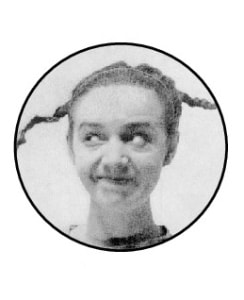
Rose Melville (Jan 30, 1873 – Oct 8, 1946)
January 30, 1873By Sherri Wright
Rose Melville was born January 30, 1873 at the St. Clair House, located at 202 Wabash in Terre Haute. She was among America’s elite stage and screen celebrities and originator of a new theatre genre. She was the youngest daughter of Rev. Jacob and Caroline Smock and was christened “Rosa.”
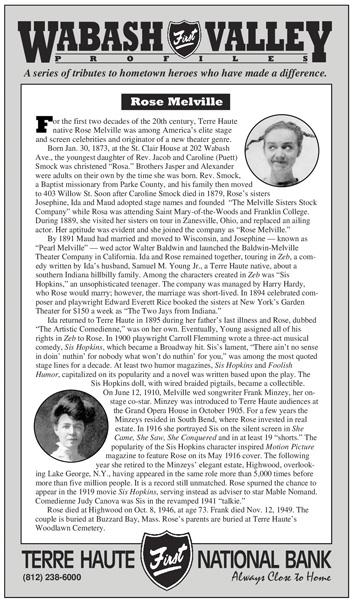
Rose’s sisters, Josephine, Ida, and Maud adopted stage names and founded “The Meville Sisters Stock Company, and in 1891 she joined the company as “Rose Melville.” Ida and Rose remained together touring in Zeb, a comedy written by Ida’s husband, Samuel M. Young, Jr., also a native of Terre Haute. Zeb was about a southern Indiana hillbilly family. Among the characters was “Sis Hopkins,” an unsophisticated teenager.
In 1895, Rose was on her own—dubbed “The Artistic Comedienne.” She started in a three-act musical comedy, “Sis Hopkins,” which became a Broadway hit. Sis’s lament “There ain’t no sense in doin’ nuthin’ for nobody what won’t do nuthin’ for you,” was among the most quoted stage lines for a decade. Two humor magazines, “Sis Hopkins” and “Foolish Humor’ capitalized on its popularity and a novel was written based on the play. The “Sis Hopkins” doll with wired pigtails became a collectible.
On June 12, 1910, Rose married songwriter Frank Minzey, her stage costar. Minzey was introduced to Terre Haute audiences at the Grant Opera House in 1905. In 1910, Rose portrayed “Sis” on the silent screen in She Came, She Saw, She Conquered, and in at least nineteen “shorts.” The character Sis Hopkins was so popular, Motion Picture magazine featured Rose on its cover on the May 1916 issue.
Rose appeared in the role of Sis Hopkins more than 5,000 times before more than 5 million people. Rose served in an advisory role when both the silent and “talkie” versions of Sis were made (in 1919 and 1941, respectively,) rather than appearing in either film. By that time she had retired to her husband’s estate in Highwood, New York. Rose died in 1946 and is buried in Massachusetts.
Rose Melville (Jan 30, 1873 – Oct 8, 1946)
Rose Melville was a famous actress of stage and screen a hundred years ago. She played her most famous role, "Sis Hopkins", thousands of times -

Bertha Pratt King (Feb 5, 1879 – Jan 16, 1962
February 5, 1879School founder was women’s suffrage advocate
By Dr. Dipa Sarkar
Special to the Tribune-Star
Bertha Pratt King Ehrmann was a native of Little Falts, N.Y., and came to Terre Haute shortly after her graduation from Smith College in early 1900. She came here to tutor Robert Smith, adopted son of Frederick Smith and Rachael Larch and made her home with them (Smith family home is now Gibault School for Boys).
She felt very keenly about the poor status of women in the field of education, jobs and thereby in greater society. They were even denied to vote, which is a basic right for every adult citizen in any democracy. Even then she knew that education is the only key to freedom!
In 1905 she, along with her friend Mary Sinclair Crawford, established King-Crawford Classical School which was at Seventh and Oak Streets. It was a private school that included primary through high-school grades and was considered a very god college preparatory school, approved by the State Board of Education.
It started with seven pupils and three teachers. However, it was not exclusively a girls’ school. Boys were in the lower grades but very few in the upper grades.
By 1916 there we no boys in the upper classes and shortly thereafter it was limited to girls only. In 1915, Mary Crawford left the school to settle in California. The school also changed its original location to Sixth and Oak streets and remained there until it closed in May 1945.
This school insisted on personal, responsibility and intense desire for acquiring knowledge. Science, sociology, English and grammar, and German and French languages were taught. Apart from that, music, drama, singing and choral music, social graces and manners were regularly taught.
Due to King’s teaching skills and organizational power, the school gained great popularity. May successful students of this school contributed greatly to society. A noteworthy one was Ernestine Myers, who was a great dance artist and later ran a classical ballet school in Terre Haute until her retirement in late 1970s.
Bertha King was acutely aware of social questions and problems of girls and women. In 1914-15 she traveled on lecture tours through Indiana, Illinois, Ohio and Pennsylvania. In 1919-20 she went on suffrage campaigns in Ohio, Wisconsin and Indiana.
She was outstanding in literary, educational and suffrage circles in Terre Haute and surrounding areas. She spoke before clubs, churches, schools and social groups and wrote for newspapers and appeared on radio talk shows.
In 1914 she had a series of radio broadcasts on the programs “Inspiring Words” and “Interesting Women.” For six years she conducted “Good English Week,” emphasizing better English.
During her teaching years she wrote a book “The Worth of a Girl” and published numerous articles in magazines and periodicals.
She was very active in the suffrage movement and organized the Forerunners Club, whose members were dedicated to the suffrage movement. She also took active roles in Women’s Department Club and other social groups.
She and her longtime friend, poet and philosopher Max Ehrmann, were married after her retirement from teaching in 1945. Unfortunately, he died after only a short few months of their marriage.
Following his death she compiled “The Journal of Max Ehrmann,” “Poems of Max Ehrmann,” “The Wife of Marobius” and other plays for publication. The following year she wrote, “Max Ehrmann: A Poet’s Life” and published it.
After a long productive life, she died in January 1962 after a prolonged illness. She led an exemplary life and contributed her best to society with her far advances, idealistic, free and progressive thoughts. She definitely was far ahead of her time. Education was her medium and women were her cause.
Bertha Pratt King (Feb 5, 1879 – Jan 16, 1962
Bertha Pratt King was leading suffragette and teacher in the late 19th century. She also helped found the Forerunners Club. -
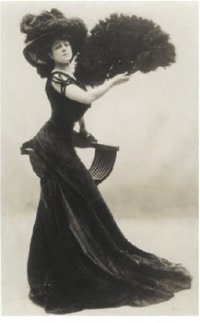
Valeska Surratt (June 28, 1882 – July 2, 1962)
June 28, 1882By Sherri Wright
Valeska Suratt was born in Owensville, Indiana and at the age of six, her family moved to Terre Haute. She had one stepsister, one older brother and a younger sister. She dropped out of school in 1899 and worked at a photographer’s studio. Suratt later moved to Indianapolis where she worked as an assistant in millinery at Block’s department store in Indianapolis.
Suratt began her career as an actress on the Chicago stage. Around 1900, she began appearing in vaudeville. She soon paired with performer Billy Gould (whom she later married) and the two created a successful act. In 1906, she made her Broadway debut in the musical The Belle of Mayfair. By 1907, Suratt and Gould had parted ways and Suratt began a successful solo act which featured her singing and dancing. Suratt’s success in vaudeville continued and she began billing herself as “Vaudeville’s Greatest Star” and “The Biggest Drawing Card in New York.”
During her years on the stage, Valeska was noted for the high fashion clothes she wore on stage and her name became synonymous with lavish gowns worldwide. She was sometimes called the “Empress of Fashions.” She possible was another model for the famous Gibson Girl sketchings. Vogue magazine later named her “one of the best dressed women on the stage.”
In 1915, Suratt signed with Fox. Like fellow Fox tonract players Theda Bara and Virginia Pearson, Suratt was marketed as a “vamp” and was cast as seductive and exotic characters. Suratt made her film debut in The Soul of Broadway in 1915. She made a total of eleven silent films during her career.
By 1920, Suratt’s career had begun to wane as the opularity of vaudeville fell out of a favor with audiences as did the vamp image craze. In 1928, Suratt and scholar Mirza Ahmad Sohrab sued Cecil B. DeMille for stealing the scenario for The King of Kings from them. The case went to trial in February 1930 but eventually settled without publicity. Suratt, who had left films in 1917, appeared to be unofficially blacklisted after the suit.
By the end of the 1920s, Suratt disappeared. In the 1930s, she was discovered living in a cheap hotel in New York City and was broke. In an attempt to revive her career, Suratt tried to sell her life story to one of William Randolph Hearst’s newspapers. A reporter who read Suratt’s manuscript later said that Suratt wrote that she was the Virgin Mary and was the mother of God. Suratt never revived her career on the stage or in films and fell out of public view. Valeska Suratt died in a nursing home in Washington, D.C. on July 2, 1962. She was 80 years old. Suratt is interred in Highland Lawn Cemetery in Terre Haute, Indiana.
Valeska Surratt (June 28, 1882 – July 2, 1962)
Valeska Suratt was a silent film actress known for her "vamp" roles. -

Charles T. Hyte (Oct 16, 1887 – May 8, 1941)
October 16, 1887Charles T. Hyte was a man devoted to education, community
By Dr. Dipa Sarkar
Special to the Tribune-Star
Since February is Black History Month, this Historical Treasure article features a man who made many contributions in the field of education in our community.

Charles T. Hyte devoted his whole life to his pupils and his teaching. He was a dedicated educator who deeply felt the race problems, poverty and lack of community support for African-Americans. But he was an optimist and always knew that academic achievements and exemplary personal conduct will bring about true freedom. His golden rule was to know how to disagree agreeably.
He was born Oct. 16, 1884, in Gallatain County, Ill. His father died when he was 6. His mother moved to Mount Vernon, and he graduated from high school there. While studying at Indiana Normal School, he taught to earn a living. After receiving a bachelor’s degree in 1925, Hyte taught in several schools outside Terre Haute but returned to become principle of Booker T. Washington School and held that post until his death on May 8, 1941.
Hyte was a charter member of the Indiana Negro Society, Prince Hall Masonic Lodge, Odd Fellows Lodge and several civic organizations.
He had no children of his own but took a deep interest in young peoples’ development. With his own funds, he financed a football team and gave them every opportunity to excel. One year after his death, a community center was dedicated in his memory. In 1942, the Charles T. Hyte Community Center opened at 1101 Washington St.
Hyte Center still continues his advocacy work. It carries out various activities, health care services, educational programs such as tutoring and counseling, referral services, social clubs, sports and recreation. The basic concept of this center was to serve economically disadvantaged but many groups are using it for meetings, conference, and training programs.
Hyte was a humble man with a big dream, which still is living on more than half a century after his death.
Historical Treasure is contributed by the Vigo County Historical Society. Its Web site is indstate.edu/community/vchs.
Charles T. Hyte (Oct 16, 1887 – May 8, 1941)
Charles T. Hyte was the principal of the Booker T. Washington School and a leader of the local African-American Community. The Hyte Community Center is named for him and continues his work. -
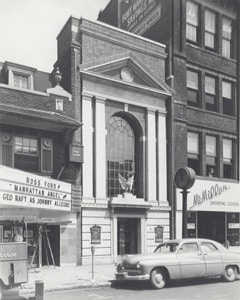
Vernon R. McMIllan (Sept 15, 1892 – Dec 1, 1968)
September 15, 1892McMillan sports a strong legacy in Terre Haute
One of Terre Haute’s most illustrious and effective mayors was Republican Vern R. McMillan, who served from 1944 to 1948.
He was born in Morril, Kan., on Sept. 15, 1892, and graduated from Baker University in 1913. He was captain of his college football team, participated in track events and was an early motorcycle enthusiast.
After coming to Terre Haute, he worked in his uncle’s bicycle shop. In 1926, he opened his own sporting goods store, first on Ninth Street, then Wabash and finally at 600 S. Third St.
He originated the famous slogan, “It Pays to Play.” McMillan, along with Dell Humphrey, was involved in the invention of football face guards. Table model inflators for footballs, basketballs, and volleyballs was another of his inventions. The originator of a color size marking system for socks, McMillan designed and patented a belt without metal in the buckle for football and baseball players.
Employees at McMillan Sporting Goods shared in an innovative pension plan under his ownership. As commander of American legion Post 40, he dedicated Sacred Heart School in spite of threats from Ku Klux Klan movements.
Many were surprised when he was elected mayor by an overwhelming majority. McMillan was instrumental in reducing gambling and houses of ill fame throughout the city. He made tremendous efforts in improving the park system, revitalized the health department by securing immunizations for all school children, providing treatment for syphilis and extending quarantine to tuberculosis patients.
Vern McMillan succeeded in interesting Anton Hulman Jr. in the city, which resulted in many improvements. During his administration, Memorial Stadium was completely remodeled.
Elected to the National Sporting Goods Industry Hall of Fame, McMillan also was a member of Terre Haute Rotary, American Legion, Elks Lodge, Zorah Shrine, and Masonic Lodge.
After a long, productive life, McMillan died Dec. 1, 1968, at age 76.
At the time of his death, he left behind three daughters, his wife having died previously. The city of Terre Haute lost a dynamic leader.
This picture was taken from the book, “Terre Haute, a Pictorial History” by Dorothy Jerse and Judith Calvert.
Vernon R. McMIllan (Sept 15, 1892 – Dec 1, 1968)
Vernon R. McMillan served as Terre Haute's mayor during the 1950's and also helped to invent the football helmet safeguard. -
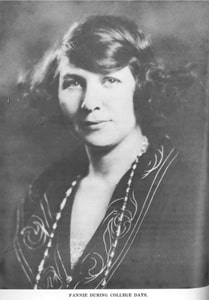
Fannie Blumberg (Feb 11, 1894 – July 9, 1964)
February 11, 1894Fannie Blumberg’s Creative Genius Lives On
Fannie Blumberg gained fame for her writing and illustrations
By Dr. Dipa SarkarVigo County Historical Society
Fannie Burgheim Blumberg was born Feb 11, 1894 in Indianapolis, an only child of a watch salesman, Louis, and petite Rachel Heimes Burgheim.
She graduated from Madam Blaker’s Kindergarten College (later absorbed into Butler University). During her school years she developed the creative writing skill- that she later demonstrated so well in her later literary works. She taught school before her marriage.
In August 1916, she married Benjamin Blumberg; a young lawyer from Terre Haute. They had four children- one son and three daughters. Their home was on a 10-acre farm located at the corner of Fruitridge Avenue and Hulman Street. These were very busy years that left her no time to write and the genius of drawing and painting was not even suspected.
After her last child was born- and with much encouragement from one of her friends, who also introduced her to the local muralist, Gilbert Wilson, she thought of her artistic inclinations.
Wilson was so impressed with her talents he later described her in this way: “She was like Minerva- she sprang to birth as an artist full blown and helmeted.” She studied painting with Franz Joseph Bollinger and Byron J. Newton in Miami, and in Los Angeles with Sueo Serisawa, a famous Japanese artist who was perhaps her most inspiring instructor.
A visit to Art Colony at Woodstock; N. Y., brought her to the attention of an art dealer, Rudolph Fiolic, who brought her to the professional art world and her artistic life began to soar.
She worked with oil, water, and allied media. She had a built in sense of color, form, and design. She never painted what she saw, but what she felt. She was bold- she liked strength. She liked big flowers with crisp green leaves. She received her inspirations from her surroundings- trees, birds, flowers and, of course, people.
Fannie Blumberg became a nationally known artist and had many exhibitions, both locally (DePauw University, Indiana State University, the Swope Art Gallery) and in faraway places. Permanent collections of her work may be found at the Butler museum at Youngstown, Lowe Gallery at Miami, and in many private collections.
Her talents were not only in the area of art, but also in literature. She became an author of children’s stories. Her best known books were “Rowena, Teena, Tot,” “Blackberries” “The Peace Finder” and “The First Circus”.
She wrote many other children’s books suited to various ages, plays (a puppet show), poems and even stories for adults. She also left many unpublished manuscripts.
She had a kind heart. She was a benefactress of many organizations, apart from DePauw and ISU. She was involved with the Girl Scouts and the mental health center. Her special interest was to help children who were mentally or physically impaired, and those who were disadvantaged. She died at the age of 70 on July 9, 1964, at her home at 4003 Hulman St.
She lives forever in her paintings, in her stories, and in her charity to many organizations. I would like to end with her daughter’s words: “She is not dead- the light went out.”
Fannie Blumberg (Feb 11, 1894 – July 9, 1964)
Fannie Blumberg was a famous artist known for her paintngs of nature and people. She was also a famous children's book author who's work included "Rowena, Teena, Tot" and "The Last Circus." -
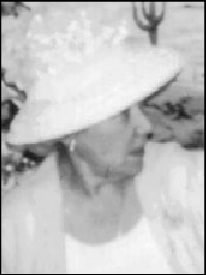
Ernestine Myers Morrissey (Jan 7, 1900 – June 29, 1991)
January 7, 1900Top-notch teachers taught children the art of dance.
By Dr. Dipa Sarkar
Dancing has been a part of life from the beginning of human history. As soon as our basic needs and safety were met, we find that people danced with rhythmical beats of drums or the tunes of flutes. They joined hands and danced with the beats to express their joys, love, and thankfulness. Dancing was used as a form of socialization and also a sense of physical well-being. After millions of years, it is still being practiced today to give us pleasure and entertainment. It is a very hard discipline and needs to be nurtured by experienced teachers.
This article focuses on three experienced and dedicated dance teachers who had studios in Terre Haute. Ernestine Myers Morrissey, Nancy Sauer, and Archileen Chambers spent their lifetimes teaching but, through their efforts, brought fame to many youngsters from the Wabash Valley. Ernestine Myers Morrissey started her dancing career when she was still a student at King Classical School here. As a child, she had taken lessons from Rose Farrington, a local teacher. She then studied at the Chicago Musical College with Madam Marie Jung, a ballet mistress of the Royal Opera in Budapest. She then went to California to study with famous dancers Ruth St. Dennis and Ted Shawn. She went on concert tour with them all over the country and was in musical shows in New York City for six years. She appeared in a variety of shows, including the Ziegfeld Follies and taught at the American Ballet School.
More than 50 years ago, she came back to Terre Haute and opened a successful dance school, teaching many youngsters the poise and skill of dancing. She was honored for her achievement during the Bicentennial year, when her photographs were displayed in the Kennedy Center for Preforming Arts in Washington D. C. She retired in 1978 and died at the age of 91 in 1991. Nancy Sauer was born Nancy Cruchfield and took her first dance lessons from Ernestine Myers when she was 9 years old. When she was in seventh grade, she was one of six girls who performed in the Gentry Brother’s Circus. She did all the acrobatic and aerial routines with perfection and traveled all of Indiana. When in the ninth grade, Miss Ernestine sent her to the Fox Theatre in St. Louis to dance. Later, she launched her vaudeville career in New York. She then performed in nightclubs and on stage, traveling extensively.
In 1940, she married Arthur Sauer, kept house and had two children, Susan Helman and Arthur Jr. Resuming her work after a period of time, she helped local theatres with their musicals, dance recitals, and participated actively in in choreography. In 1953, Nancy opened her own school of theatrical dancing on Wabash Avenue where she taught. She also ran five different schools in the surrounding area. Now, she is retired, but her life has been rich, productive, and rewarding.
Archileen Chambers was a Terre Haute native born Sept 19, 1910, the only child of Archie and Maudette Chambers. Her father ran a restaurant, but was a talented musician specializing in xylophone, saxophone, and drums. Her mother was a pianist. She studied dance under Rose Farrington, later Ernestine Myers, and by the time she was 8, was giving recitals as a dancer, pianist, and drummer. She became a featured dancer on the vaudeville circuit. Growing tired of traveling, she returned to Terre Haute and opened a dance studio in 1946 at 324 S. Fourth St. and later at 9 S. 13th St.
At the age of 50, she married Shubert Sebree, a close associate of Eugene V. Debs and resided at 213 N. 13th St. She died Jan. 18, 2002, at the age of 91.
These three accomplished dancers of Terre haute, not only had brilliant careers of their own, but paved the way for many young children of the area, inspiring them to the path of beauty and grace through dance. They are featured in the Historical Museum’s current exhibit, “Let Us Entertain You”.
Ernestine Myers Morrissey (Jan 7, 1900 – June 29, 1991)
Ernestine Morrissey was a dancer who performed in the Ziegfield Follies and toured around the country. Later she opened a dance studio in Terre Haute and taught generations of children how to dance. -
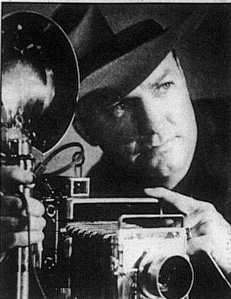
Kenneth Martin (March 14, 1902 – Oct 1, 1999)
March 14, 1902Photographer’s contributions to history can’t be measured
By Dr. Dipa Sarkar
Vigo County Historical Society
Kenneth Martin is known as probably the best and most prolific photographer of Terre Haute and all the adjacent areas. He was born into photography in 1909, one of seven children. His father, Frank Martin, opened Martin’s Photo Shop at 681 Wabash Ave. on the corner of Seventh Street and Wabash Avenue in 1906. The growing community needed a photo shop and he was a talented photographer, doing both portrait and commercial work.
Ken Martin started working in his father’s photo shop in 1928. Actually, all his brothers and sisters worked in the shop at one time or another. Ken Martin also attended Indiana State University.
Frank Martin met an untimely death form a road accident in the early 1930’s. Ken and his brother, Willard, purchased the business from their mother and continued it. Willard managed the studio’s portrait department and Ken handled the commercial and news department. In 1929, Ken married Margaret Evinger who also joined him in the photo shop and continued working there until the studio closed in 1976.
There is no doubt that Ken Martin was an accomplished and talented photographer. With the help of Martin, the Tribune-Star Publishing Co. ran the Rotogravure section in the Sunday paper form 1928 unitl 1976.
In those years, photography was no easy job. The photographer had to deal with heavy cameras, light equipment, stands and ladders, but this talents never failed. They overcame the financial difficulties during the Depression era. At times, there were 12 5o 16 employees. Ken Martin had talents, not only in photography, but also in public relations, particularly with children who were frequent objects of his art.
At the time of the Great Depression, he took photographs of people waiting in line for bread at the Salvation Army. This picture was forever etched in the memory of people of that time. He was particularly sensitive not to show their faces, but took the pictures from the back. His other favorite subjects were teaches and farmers. He also took pictures of many famous people, such as Theodore, Franklin and Eleanor Roosevelt, John and Robert Kennedy, Harry Truman, Richard Nixon, Rudy Vallee, Bud Taylor and Mordecai Brown.
Ken Martin was a charter of the National Press Photographers of America and was the recipient of many awards for outstanding contributions to his profession.
After more than 50 years, Ken Martin closed his studio and retired. He had amassed a file of more than 500,000 photographs and negatives. The bulk of his collection was given to the Indiana Historical Society, with others going to the ISU Library, the Vigo County Historical Society and the Vigo County Public Library.
His contributions, through photographs, to the history of Vigo County cannot be measured. Among others, his photos are featured in two valuable sources of information, publications written by Dorothy Jerse and Judith Calvert, namely “Terre Haute, A Pictorial History” and “On the Home Front in Vigo County, Indiana 1941 to 1945”.
Kenneth Martin (March 14, 1902 – Oct 1, 1999)
For several decades, Kenneth Martin and photography were synonymous in Vigo County. At almost every event, Martin's camera was there to capture the action. -
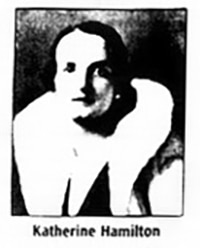
Katherine Hamilton (Nov 25, 1902 – May 3, 1961)
November 25, 1902Paying Homage to Katherine Hamilton
As March is recognized as Women’s History Month, it is only fitting to pay homage to a local outstanding woman-Katherine Hamilton, who dedicated her life in the service of mentally ill patients, both on a local and national level. She became truly a pioneer in this field at a time when the families affected by this condition would be castigated to inhuman conditions. Patients would often be put in jail and have to wait until they could be admitted to mental hospitals which were also called state hospitals. Families might keep these patients hidden for fear of social stigma and shame.
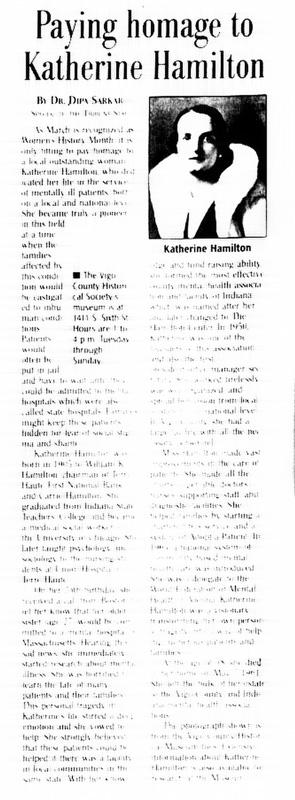
Katherine Hamilton was born in 1903 to William K. Hamilton, chairman of Terre Haute First National Bank, and Carrie Hamilton. She graduated from Indiana State Teacher’s College and became a medical social worker at the University of Chicago. She later taught psychology and sociology to the nursing students at Union Hospital in Terre Haute.
On her 25th birthday, she received a call from Boston to let her know that her older sister (age 27) would be committed to a mental hospital in Massachusetts. Hearing this sad news, she immediately started research about mental illness. She was horrified to learn the fate of many patients and their families. This personal tragedy in Katherine’s life stirred a deep emotion and she vowed to help. She strongly believed that these patients could be helped if there was a facility in local communities in the same state. With her knowledge and fund raising ability, she formed the most effective county mental health association and facility of Indiana which was named after her and later changed to the Hamilton Center. In 1950, Katherine was one of the founders of this association and also the first president/ office manager/ secretary. She worked tirelessly, was well organized, and spread her vision from local to state to the national level. In Vigo County, she had a large facility with all the necessary personnel.
Miss Hamilton made vast improvements in the care of patients. She made all the efforts to get able doctors, nurses, supporting staff, and diagnostic facilities. She helped families by starting a chartered bus service and a system of Adopt-A-Patient. In 1963, a national system of community based mental health care was introduced. She was a delegate to the World Federation of Mental Health in Vienna. Katherine Hamilton was a visionary, transforming her personal tragedy into a way of helping numerous patients and families.
At the age of 58, she died in her home on May 7, 196. She left the bulk of her estate to the Vigo County and Indiana mental health associations.
The photograph shown is from the Vigo County Historical Museum files. Extensive information about Katherine Hamilton is also available for research at the museum.
Katherine Hamilton (Nov 25, 1902 – May 3, 1961)
Katherine Hamilton was an early advocate for mental health patients. The Hamilton center is named for her. -
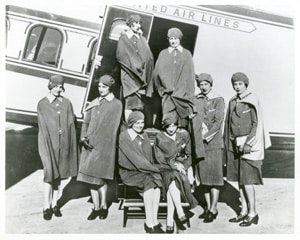
Ellen Church (September 22, 1904 – August 22, 1965)
September 22, 1904Church flew to new heights
By Dr. Dipa Sarkar
Ellen Church Marshall was born on a farm near Cresco, Iowa, on Sept. 22, 1904. She led a pioneering life that won her international recognition in the fields of nursing and aviation.
She was a graduate of the University Of Minnesota School Of Nursing. She also had a master’s degree in nursing administration from the University of Chicago.
In the 1930’s, while she was associated with the French hospital in San Francisco, she proposed to United Airlines the idea of having women as stewardesses on passenger flights. That is the way the “sky girls” came about on May 15, 1930. Boeing 80A had its first flight with a woman stewardess (Ellen), 15 passengers, a pilot and co-pilot.
As an officer of the U.S. Army Nurses Corps between 1942 and 1946, she served in Africa, Europe and the U.S. She served 20 months evacuating wounded soldiers from the front lines.
She was the first woman to receive the Air Medal, EAME Campaign Medal, American Theatre Campaign Medal, Victory Medal, and seven Bronze Stars.
After 18 months as chief stewardess, she was grounded because of an auto accident injury but continued her activities as a registered nurse.
She became an administrator of Union Hospital in Terre Haute in 1952, a tenure that ended in 1965. She instituted many progressive measures that brought full accreditation of the hospital. She improved working conditions, added the North Wing and a modern psychiatric ward.
Her local activities were numerous. She was the president-elect of the Women’s Service League. She had been very active in the American and Indiana nurses associations, Vigo County Civil Defense Council and the Federation of Mother’s Clubs of Boy Scouts, of which she was president in 1962-63. She was also a member of the Vigo County Mental Health Association, which honored her for her outstanding contributions.
In the last year of her life, she married Leonard Marshall, president of Terre Haute First national Bank. Only 11 months later, on Aug 27, 1965, she died from injuries suffered from a riding accident and thus ended a heroic life.
In the reception room of Union Hospital, there is a bronze plaque paying tribute to her as a humanitarian, war heroine, and aviation pioneer.
She also received an ‘Aviation First” award.
The Ellen Church Marshall Memorial, an eight story wing of United Airlines Stewardess management Center near Chicago’s O’Hare Airport, was dedicated in her memory. United Airlines also contributed $25,000 to Union Hospital in her memory.
Ellen Church (September 22, 1904 – August 22, 1965)
Ellen Church was the first female stewardess for any airline. She won seven bronze stars for saving the lives of wounded soldiers during World War 2. Finally she was the administrator of Union Hospital. -
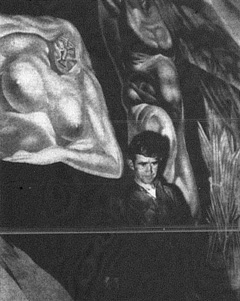
Gilbert Wilson (March 4, 1907 – Jan 16, 1991)
March 4, 1907Wilson’s beliefs showed in murals
By Dipa Sarkar
Vigo County Historical Society
Gilbert Wilson was born in 1907 in a white frame house located at 1201 N. Fourth St., Terre Haute.
His mother, Martha, was an opera star and his father, Wilton Albert Wilson, was vice president of the First National Bank of Terre Haute. Gilbert’s love for his parents was expressed strongly when he dedicated his first mural at Woodrow Wilson Junior High School to them.
Wilson graduated from Garfield High School in 1925. While at McLean Junior high School, he became involved in the Boy Scout activities which he loved with a passion for the next 30 years.
He believed in the need for mankind to join in brotherhood and portrayed this vividly in one of his murals of four Scouts of red, yellow, black and white races with their arms around each other and their hands clasped together.
After high school, he attended Indiana State normal, where Dr. William Turman, his art teacher, became a driving force in his life. He then enrolled in the Chicago Art Institute where he won a first prize of $200 at the Chicago Hoosier Salon. He was introduced to muralist Eugene Savage who was impressed with the young artist and took his as his apprentice at Yale School of Fine Arts.
Financial problems caused him to return to Terre Haute. These difficulties were solved by millionaire C.W. Root, whose company invented the Coca-Cola bottle. He commissioned Wilson to do some murals at his indoor swimming pool and paid him $500.
He then was able to study in Mexico, with Mr. Rivera and later with the Spanish sculptor, Urbici Soler. During this period, he did two busts of Max Ehrman and a bust of the Dreiser Memorial.
At the age of 28, he returned to Terre Haute and painted murals on the walls of Woodrow Wilson Junior High School. It took one month to finish one wall, named “Machinery.” This mural represented the domination of the society by the “juggernaut” of the modern industrialization.
Gilbert then worked on the south wall were he painted such distinguished citizens of the community as Dr. Turman, George Krietenstein (founder of the local Boy Scouts), and Miss Dawson (his high school teacher).
After months of labor, his second mural, “Social Pattern,” was completed. There was controversy about the murals, the main objections being two inscriptions quoted from the Declaration of Independence and Abraham Lincoln.
Frustrated, he went back and added two more, on from Woodrow Wilson and the other he composed. Many praises followed, but he was most proud of a bag of coins totaling $28.35, collected by the students.
Murals that Gilbert Wilson did at Indiana University schools portrayed his hope for peace and brotherhood. Others were done at Antioch College, State High School and Community theatre in Terre Haute.
One of his great supporters was Mrs. Fannie Blumberg, also an artist. She gave him a studio and $2,000 a year to live on.
Wilson produced two films, one of which won an award at Cannes Film Festival. The movie was based on Herman Melville’s “Moby Dick” and was composed of about 300 drawings. He also made two sculpture plaques for Heldentenor Foundation named as “Tristan” and “Isolde.”
Wilson died Jan. 16, 1991, in Frankfort, Ky. His immortal murals remain at Woodrow Wilson, University School, and Talley Memorial Playhouse. He showed his generosity by donating “Moby Dick” paintings and the “Insanity Series” to the Swope Art Museum.
Gilbert Wilson (March 4, 1907 – Jan 16, 1991)
Gilbert Wilson was a prominent artist who specialized in murals. His work often reflected his passion for social justice -
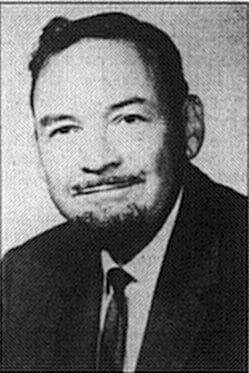
Herman A Moench (Aug 11, 1908 – May 22, 1990)
August 11, 1908Rose-Hulman professor remembered for his dedication to school
By Dr. Dipa Sarkar
Special to the Tribune-Star
As Rose-Hulman Institute of Technology celebrates its 125th anniversary, we remember one of the most dedicated professors of this institute, Herman A. Moench, who spent almost 56 years as a professor of electrical engineering.
Moench, a Terre Haute native, graduated from Wiley High School and entered what was then Rose Polytechnic Institute, graduating in 1929.
After a brief employment with Bell Telephone Laboratories, he returned to Rose in 1930. Except for graduate study at the University of Michigan and World War II Army service, his professorship at Rose was continuous, a tenure unmatched at the college.
A lifelong bachelor, Moench was acknowledged as an engineer’s engineer and a teacher’s teacher. He served as chairman of the electrical engineering department, dean of engineering, twice acting president of the college and senior vice president. He was the governor’s appointee to the Indiana State Board of Registration of Engineers and Land Surveyors for more than 25 years.
Moench was recognized as Indiana Engineer of the year and received the Distinguished Service Award and Award of Merit of the National Council of Engineering Examiners. Rose-Hulman conferred to him a doctor of engineering in 1971, the same year the main academic building was named in his honor. Because of his lifelong dedication, he was honored by the establishment of; a chair known as the Herman A. Moench Distinguished Professorship; the Herman A. Moench Award; and the Herman A. Moench Summer Faculty Grants Program.
Moench also was active in community affairs, serving on the board of directors of the Terre Haute Rotary Club, Goodwill industries and the United Way of the Wabash Valley, and as a member of Immanuel Lutheran Church.
Moench died May 22, 1990, at age 81, His dedication to education and to Rose-Hulman Institute of Technology has been an inspiration to others to follow in his path. Historical Treasure is contributed by the Vigo County Historical Society.
Herman A Moench (Aug 11, 1908 – May 22, 1990)
Herman Moench was noted for his devotion to Rose-Hulman. He served the college for almost sixty years. -
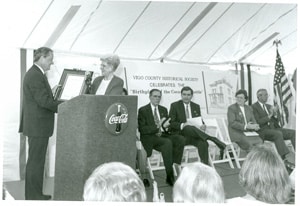
Pete Chalos (June 27, 1927 – June 4, 2006)
June 27, 1927Book gives insight to former mayor’s life.
By Dr. Dipa Sarkar
P. Pete Chalos served as mayor of Terre Haute for 16 years, the second longest serving mayor in the city’s history. Recently Chalos wrote about his childhood years “Growing up in Terre haute, One Day at a Time 1930-1945.”
Chalos was born in Terre Haute on June 27, 1925 at 1113 Poplar St. His father, John, came to the United States from Greece at the age 14. His destination was Seattle, Wash, and his train ticket was pinned to his shirt. He got off the train in Terre haute, lost his ticket, couldn’t speak English, and the police took him to a Greek merchant who ran a Country Kitchen at Seventh Street and Wabash Avenue. He operated a hat cleaning and shining parlor at that location from 1910 to 1965.
Pete Chalos was one of five children born to John and Katherine Chalos. Growing up, he worked in his father’s store, sold newspapers and worked at Quaker Maid. At Wiley High School, he was a city mile champion in 1944 and a cross country champion in 1945. A Navy veteran and graduate of Indiana State University, Chalos taught and coached basketball and tennis in the Vigo County School Corp. Marriage to Panagiota Angelos “Ulla” brought three children, Jimmy, Johnny, and Kathy.
Chalos was a teacher at heart, but was always very interested in politics. After serving as a city councilman, he decided to run for the office of mayor, was elected and served from 1980 to 1996. During that time, much was accomplished in the city. He was interested in bringing large commercial industries to the city, increasing educational opportunities, creating more and better jobs, improving police and fire protection, repairing streets and beautifying city parks,
In 1995, Chalos lost the primary election to Sheriff James R. Jenkins and concluded his 16 years as Terre Haute’s mayor. During those years, in addition to his service to the city, he interacted with many leaders on the national level, such as presidents, Jimmy Carter, George Bush, and Bill Clinton. He enjoyed a private conversation with Mikhail Gorbachev and his wife, Raisa. During a political rally for presidential races, he met with John Chancellor and Sam Donaldson. Many other personalities in the world of politics and entertainment became acquaintances.
Pictured is a paid political newspaper advertisement used after the mayoral election in 1983.
“Growing up In Terre Haute” is a trip down memory lane for anyone who grew up in our community or one of similar size during the 1930’s, 40’s or 50’s. The book is being sold in the Vigo County Historical Museum gift shop. Treat yourself to a copy.
Pete Chalos (June 27, 1927 – June 4, 2006)
Pete Chalos was mayor of Terre Haute from 1980 to 1996 where he assisted the city in improving services, the economy, and its reputation. -
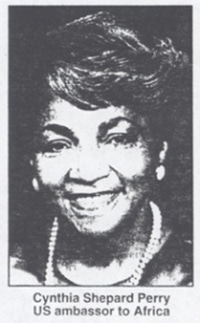
Cynthia Shepard Perry (Nov 11, 1928)
November 11, 1928Vision, spirit tools for ambassador
“The earth is but one Country and mankind is its Citizen.” — Cynthia Shepherd Perry
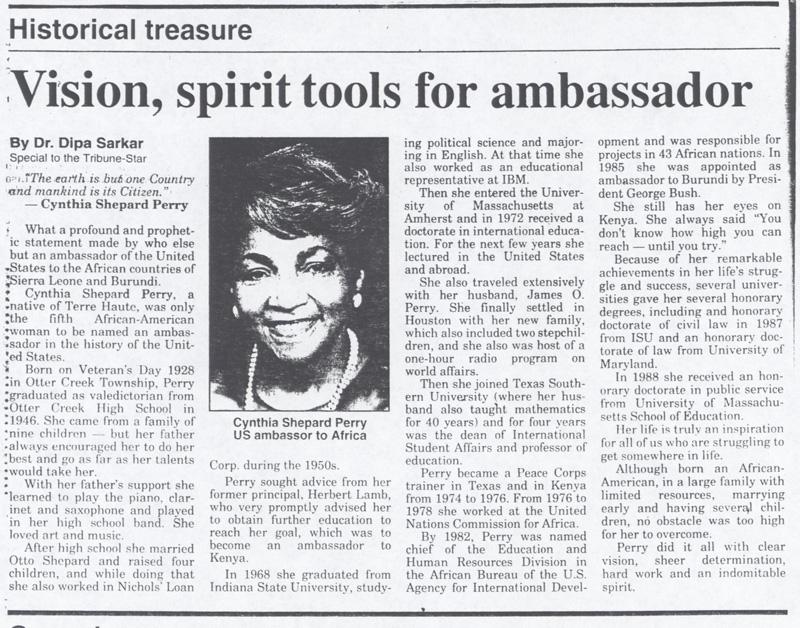
What a profound and prophetic statement made by who else but an ambassador of the United States to the African countries of Sierra Leone and Burundi.
Cynthia Shepherd Perry, a native of Terre Haute, was only the fifth African-American woman to be named an ambassador in the history of the United States.
Born on Veteran’s Day 1928 in Otter Creek Township, Perry graduated as valedictorian from Otter Creek High School in 1946. She came from a family of nine children- but her father always encouraged her to do her best and go as far as her talents would take her.
With her father’s support she learned to play the piano, clarinet and saxophone and played in her high school band. She loved art and music. After high school she married Otto Shepherd and raised four children and while doing that she also worked in Nichols’ Loan Corp. during the 1950’s.
Perry sought advice from her former principal, Herbert Lamb, who very promptly advised her to obtain further education to reach her goal, which was to become an ambassador to Kenya.
In 1968 she graduated from Indiana State University, studying political science and majoring in English. At the time she also worked as an educational representative at IBM.
Then she entered the University of Massachusetts at Amherst and in 1972 received a doctorate in international education. For the next few years she lectured in the United States and abroad.
She also traveled extensively with her husband, James O. Perry. She finally settled in Houston with her new family, which also included two stepchildren, and she was also host of a one-hour radio program on world affairs.
Then she joined Texas Southern university (where her husband also taught mathematics for 40 years) and for four years was the dean of International Student Affairs and professor of education.
Perry became a Peace Corps trainer in Texas and in Kenya from 1974 to 1976. From 1976 to 1978 she worked at the United Nations Commission for Africa.
By 1982, Perry was named chief of the Education and Human Resources Division in the African Bureau of the U.S. Agency for International Development and was responsible for projects in 43 African nations. In 1985 she was appointed as ambassador to Burundi by President George Bush.
She still has her eyes on Kenya. She always said “You don’t know how high you can reach- until you try.”
Because of her remarkable achievements in her life’s struggle and success, several universities gave her several honorary degrees, including and honorary doctorate of civil law from University of Maryland.
In 1988 she received an honorary doctorate in public service from University of Massachusetts School of Education.
Her life is truly an inspiration for all of us who are struggling to get somewhere in life.
Although born an African-American, in a large family with limited resources, marrying early and having several children, no obstacle was too high for her to overcome.
Perry did it all with clear vision, sheer determination, hard work and an indomitable spirit.
Cynthia Shepard Perry (Nov 11, 1928)
Cynthia Shepherd Perry was one of the first African-American women to serve as an ambassador from the United States. She served as ambassador to both Burundi and Sierra Leone. -
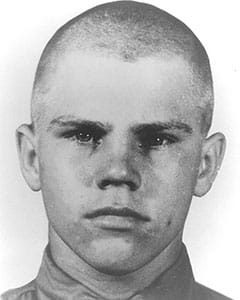
Charles Abrell (Aug 12, 1931 – June 10, 1951)
August 12, 1931By Dr. Dipa Sarkar
Cpl. Charles Abrell lived on this earth for only 19 years, but he left a memorable legacy for his remarkable valor, self-sacrifice, leadership and patriotism.
He came from a very proud military family where his father served as a career man in the Navy and his older brother served five years in the same service branch. Even his younger sister served as a sergeant with the WACS.
Born in Terre Haute on Aug. 12, 1931, Abrell lived and grew up in a small house on Chase Street just a few blocks north of Wabash Avenue. He attended Davis Park Elementary and Woodrow Wilson Junior High School. Only five days after his 17th birthday, he enlisted in the Marine Corps. After recruit training at Parris Island, S.C., he was assigned to Camp Lejeune, N.C., and also served aboard the USS Noble before going to Korea with the 1st Marine Division.
He was the leader of his squad, when he was pinned down by enemy fire on June 10, 1951 in an assault on a hill near Hwachon, North Korea. Abrell had already been wounded by enemy hand grenade fragments, but was still fighting. Suddenly, he took off alone, ordering his platoon to stay behind. He stormed toward the enemy bunker with a grenade in his hand, pulled the pin and threw himself into the bunker, killing himself and all the enemy soldiers in the bunker. In the face of sure death, he proceeded alone and brought success to his platoon by attaining its objective.
When his recently widowed mother was informed about his death, she cried out in agony and said, “How can he die? He is just a little boy!” He was entitled to be buried in Arlington Cemetery, but his mother insisted upon keeping him close. So he was buried in a Farmersburg cemetery where his grieving mother could visit his grave often. It is marked with a simple headstone marking his name, military rank, and dates.
His valiant services to the military were gratefully acknowledged by the president and Marine Division with posthumous honors. President Truman sent a citation to his mother for his gallantry. He also received a Medal of Honor and Purple Heart on June 10, 1951. He received two Bronze Stars, National Defense Service Medal, Korean Service Medal, United Nations Service Medal, Korean Presidential Unit citation and many others.
Although this Hoosier hero was greatly appreciated nationally, he was almost forgotten by the community where he grew up. Almost 10 years after his death, people of this community wanted to honor him in a special way and set up a memorial committee. Because of their dedication and enthusiasm, several actions were taken.
Scholarship awards to honor Cpl. Charles Abrell were set up. The recipient is selected on a competitive basis through the facilities of the National Merit Scholarship Corp.
A commemorative plaque honoring Abrell is displayed on the bridge crossing the Wabash River on U.S. 41, north of the city
Members of the Joseph A. Bray Detachment 471 of the U.S. Marine Corps League in Terre Haute decided a fitting tribute would be a sculpture of his likeness on the lawn of the Vigo County Courthouse. The statue was funded by the Marine Corps League. It was done by artist Bill Wolfe and is a 6-foot bronze statue of a soldier clad in full combat gear, clutching an M-1 rifle. It was dedicated on June 10, 2000, the 50th anniversary of his death.
Abrell lived a short life, but he remains the finest example of courage, dedication, leadership, and patriotism. At the darkest hour of his life, he never hesitated a moment to sacrifice his own life to save the lives of his platoon members.Charles Abrell (Aug 12, 1931 – June 10, 1951)
By Dr. Dipa Sarkar Cpl. Charles Abrell lived on this earth for only 19 years, but he left a memorable legacy for his remarkable valor, self-sacrifice, leadership and patriotism. He came from a very proud military family where his father served as a career man in the Navy and his older brother served five years […]
Contributors
Dr. Dipa Sarkar, Historian Emerita
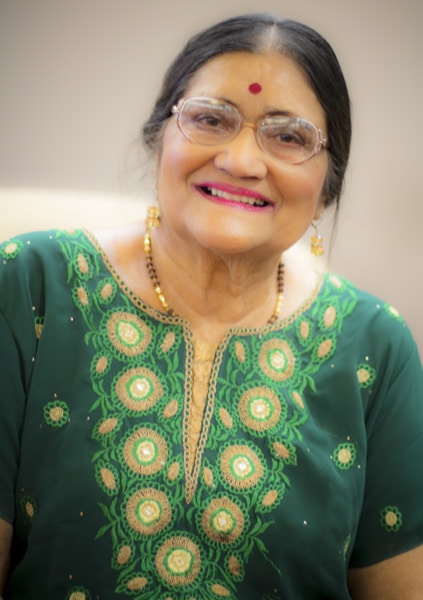
Dr. Sarkar and her husband, Dr. Anil Sarkar, finished their residency in pathology in the United States, and moved to Terre Haute, Indiana in 1969. Dr. Dipa Sarkar worked as a pathologist in Union Hospital and in Clay County and Sullivan Hospitals. While working, she also taught medical and medical technology students at Indiana State University. She helped establish the Planned Parenthood clinic in Terre Haute. She retired from medical practice in 1990.
Working for the people and helping those in need became Dr. Dipa Sarkar’s passion after retirement. She was the First President of India Association of Terre Haute, and served as a volunteer and as a board member with Life Line, CODA (Council on Domestic Abuse), the American Cancer Society, the American Red Cross, the Salvation Army, Swope Art Museum, the Vigo County Public Library, (where she taught English to foreign students) and with Catholic Charities (where she worked as a volunteer in the soup kitchen and taught the children about cleanliness and nutrition.)
Dr. Dipa Sarkar received a letter of appreciation for her work from President Bill Clinton in 1996. She was also awarded the first Aspire Higher Award given by Saint Mary-of-the-Woods College in recognition of her dedication to volunteer work. Dr. Dipa Sarkar has one daughter, Rumu Sarkar, PhD, a lawyer in Washington D. C.
As a volunteer for the Vigo County Historical Museum, Dr. Dipa Sarkar wrote many biographical articles of important people of the Terre Haute area and other articles of general interest that were published in the local newspaper, the Terre Haute Tribune Star.
Arts Illiana


